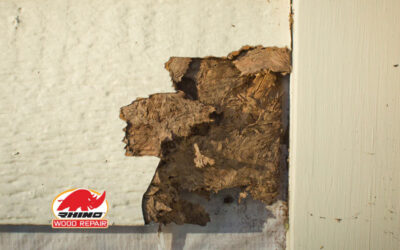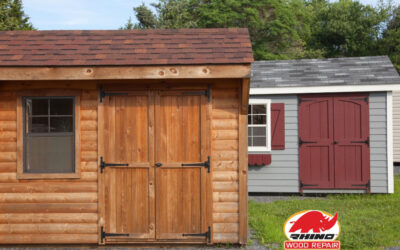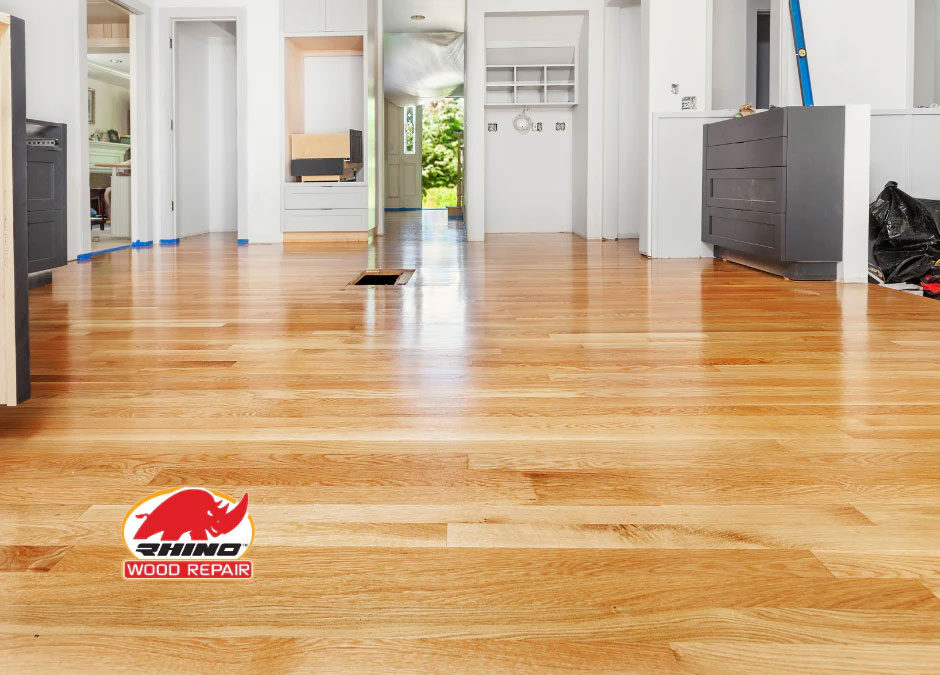
by Robin Pixner | Jun 28, 2024 | News
Water damage can be a homeowner’s worst nightmare, especially when it comes to beautiful wood floors. Whether it’s from a leaky pipe, a spill, or a natural disaster, water can wreak havoc on your hardwood flooring. But don’t despair! With the right knowledge and tools, you can restore your water-damaged wood floors to their former glory. In this comprehensive guide, we’ll walk you through the steps to assess, repair, and prevent future water damage to your cherished wood floors.
Understanding Water Damage in Wood Floors
Before we dive into the repair process, it’s crucial to understand how water affects wood flooring.
Types of Water Damage
- Surface damage: Caused by spills or minor leaks
- Deep damage: Results from prolonged exposure or flooding
- Structural damage: Affects the subfloor and floor joists
Signs of Water-Damaged Wood Floors
- Cupping: Edges of boards are higher than the center
- Crowning: Center of boards are higher than the edges
- Buckling: Boards completely detach from the subfloor
- Discoloration: Dark spots or stains on the wood
- Mold growth: Fuzzy or slimy patches on the surface
Steps to Fix Water-Damaged Wood Floors
- Assess the Damage
Before starting any repairs, carefully evaluate the extent of the damage:
- Identify the water source and stop it
- Determine if the damage is surface-level or deep
- Check for mold growth
- Assess the affected area’s size
- Remove Excess Water
Quick action is crucial to minimize damage:
- Use towels or a wet vacuum to absorb standing water
- Run dehumidifiers and fans to dry the area
- Open windows for better air circulation
- Clean and Disinfect
Prevent mold growth and sanitize the area:
- Use a mild detergent solution to clean the floor
- For mold, use a mixture of water and white vinegar
- Dry the floor thoroughly after cleaning
- Sand and Refinish
For surface-level damage:
- Allow the floor to dry completely (may take several weeks)
- Sand the affected area to remove water stains
- Apply wood filler to any cracks or gaps
- Stain the repaired area to match the surrounding floor
- Apply a protective finish
- Replace Damaged Boards
For severe damage:
- Remove the damaged boards carefully
- Install new boards that match the existing flooring
- Sand and finish the new boards to blend with the rest of the floor
- Treat and Protect
To prevent future damage and extend the life of your wood floors:
- Apply a water-resistant sealant
- Use Rhino Wood Repair products to treat and protect the wood
Preventing Future Water Damage
An ounce of prevention is worth a pound of cure. Here are some tips to protect your wood floors:
- Regularly inspect for leaks in plumbing and appliances
- Use mats at entryways to catch water from shoes
- Clean up spills immediately
- Maintain proper indoor humidity levels (30-50%)
- Apply a protective coating every few years
FAQs About Water-Damaged Wood Floors
How long does it take for water to damage wood floors?
Water can begin to damage wood floors within hours of exposure, but visible signs may not appear for days or weeks.
Can I save severely water-damaged wood floors?
While severe damage often requires board replacement, many water-damaged floors can be saved with proper treatment and restoration techniques.
How can I tell if there’s water under my wood floor?
Look for signs like cupping, crowning, or a musty odour. You can also use a moisture meter for a more accurate assessment.
Is it necessary to replace the entire floor if only a portion is damaged?
Not always. Often, only the affected boards need to be replaced, and the rest of the floor can be restored through sanding and refinishing.
How can I prevent mold growth after water damage?
Act quickly to remove water, dry the area thoroughly, and use anti-mold products like those offered by Rhino Wood Repair.
Top 5 Rhino Wood Repair Products for Water-Damaged Floors
- Wood Hardener: Strengthens and reinforces weakened wood fibers
- Water-Resistant Sealant: Protects wood from future water damage
- Anti-Rot Treatment: Prevents and eliminates rot growth
- Wood Filler Putty: Repairs cracks and gaps in damaged wood
- Protective Finish: Seals and beautifies restored wood floors
By following these steps and using high-quality products, you can effectively repair water-damaged wood floors and prevent future issues. Remember, the key to successful restoration is quick action and proper treatment.
About the Author:
Robin Pixner is the owner and chief chemist of Rhino Wood Repair, with over 30 years of experience in wood restoration and protection. As a leading expert in the field, Robin has developed innovative solutions to extend the life of wood and combat common issues like water damage and rot. His passion for preserving and restoring wood has led to the creation of Rhino Wood Repair’s line of high-performance products, trusted by professionals and homeowners alike.
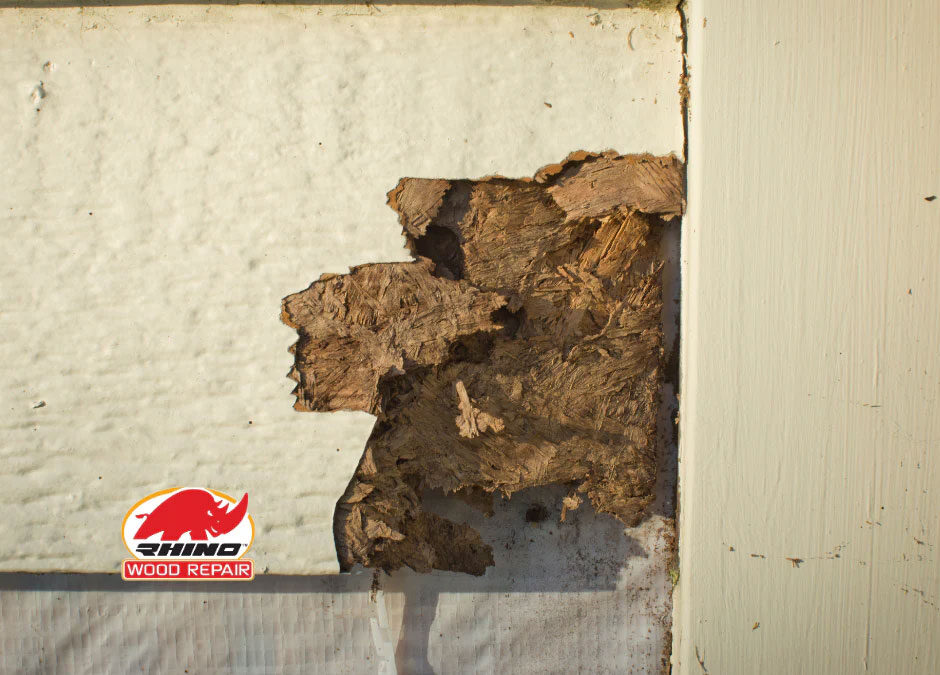
by Robin Pixner | Jun 25, 2024 | News
Wood rot is a common problem that can significantly reduce the lifespan of wooden structures and furniture. Understanding how climate affects wood rot and implementing effective prevention strategies is crucial for maintaining the integrity of wood in various environments. In this comprehensive guide, we’ll explore the relationship between climate and wood rot, and provide practical solutions to protect your wooden assets.
Understanding Wood Rot
What is Wood Rot?
Wood rot is a form of decay caused by fungi that break down the cellular structure of wood. This process weakens the wood, compromising its strength and structural integrity.
Types of Wood Rot
- Dry rot
- Wet rot
- Soft rot
The Climate-Wood Rot Connection
How Climate Influences Wood Rot
Climate plays a significant role in the development and progression of wood rot. The following factors are particularly influential:
- Moisture levels
- Temperature
- Humidity
- Seasonal variations
High-Risk Climate Zones
Some climates are more conducive to wood rot than others. Areas with the following characteristics are particularly susceptible:
- High rainfall
- Tropical or subtropical regions
- Coastal areas with salt spray
- Regions with frequent temperature fluctuations
Prevention Strategies for Different Climates
Dry Climates
- Regular sealing and staining
- Proper ventilation to prevent moisture buildup
- Prompt repair of any water damage
Humid Climates
- Use of moisture-resistant wood species
- Application of water-repellent preservatives
- Installation of dehumidifiers in enclosed spaces
Coastal Areas
- Regular cleaning to remove salt deposits
- Use of marine-grade sealants
- Choosing rot-resistant wood species like cedar or redwood
5 Essential Steps to Prevent Wood Rot in Any Climate
- Regular inspections
- Proper drainage and water management
- Adequate ventilation
- Use of quality wood preservatives
- Prompt repairs and maintenance
Innovative Solutions: Rhino Wood Repair Products
At Rhino Wood Repair, we offer cutting-edge products designed to combat wood rot across various climates. Our products are formulated to:
- Penetrate deep into wood fibers
- Create a moisture-resistant barrier
- Strengthen existing wood structures
- Extend the life of wooden assets
Featured Product: Rhino PreTreat
Our flagship product, Rhino Wood PreTreat, is specially designed to:
- Reinforce weakened wood
- Prevent future rot
- Work effectively in diverse climates
FAQs About Climate and Wood Rot
- How quickly can wood rot develop in a humid climate?
In highly humid environments, wood rot can begin to develop within a few months if proper preventive measures are not taken.
- Can wood rot spread to other wooden structures?
Yes, wood rot fungi can spread through spores, potentially affecting nearby wooden structures if not addressed promptly.
- Are there any eco-friendly wood preservatives for preventing rot?
Yes, there are several eco-friendly options available, including borate-based preservatives and certain plant-based oils.
- How often should I inspect my wooden structures for signs of rot?
It’s recommended to conduct thorough inspections at least twice a year, ideally in spring and fall.
- Can painting wood prevent rot?
While paint can provide some protection, it’s not a foolproof solution. Proper sealing and preservative treatments are more effective for long-term rot prevention.
The Long-Term Benefits of Wood Rot Prevention
Investing in wood rot prevention strategies offers numerous advantages:
- Extended lifespan of wooden structures
- Reduced repair and replacement costs
- Improved safety and structural integrity
- Enhanced aesthetic appeal
- Increased property value
By implementing the strategies outlined in this guide and using high-quality products like those offered by Rhino Wood Repair, you can significantly reduce the risk of wood rot and protect your wooden assets for years to come.
About the Author
Robin Pixner is the owner and lead chemist at Rhino Wood Repair, with over 30 years of experience in wood preservation and repair. His expertise in developing innovative solutions for wood rot prevention has made him a respected figure in the industry. Robin’s commitment to creating effective, environmentally friendly products has helped countless homeowners and businesses protect their wooden structures across various climates.
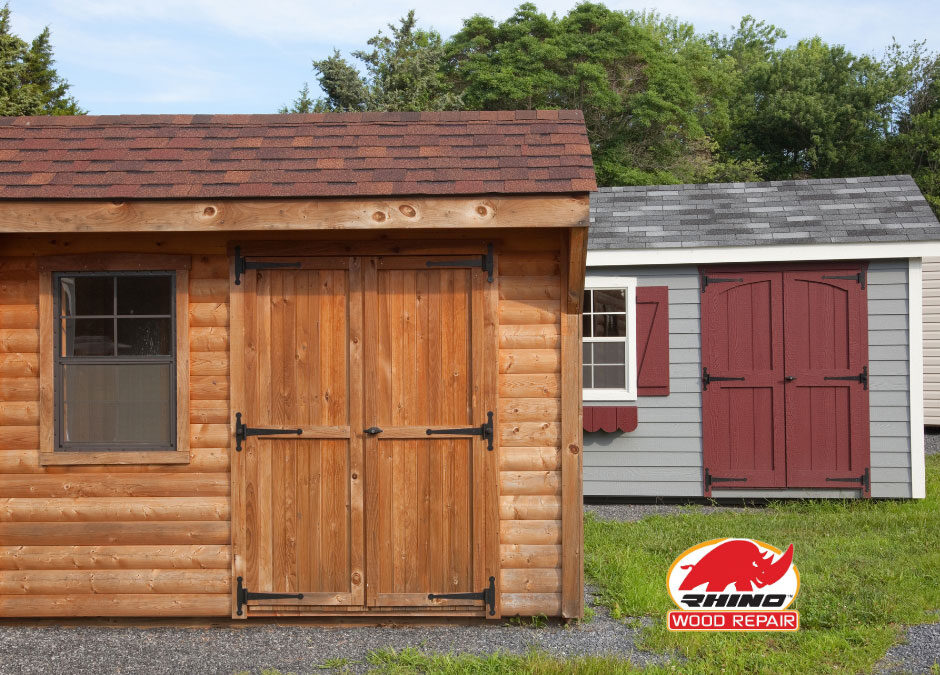
by Robin Pixner | Jun 21, 2024 | News
Techniques for Repairing Weakened Wood
Wood is a versatile and beautiful material that has been used in construction and craftsmanship for centuries. However, over time, wood can become weakened due to various factors such as moisture, insect infestation, and decay. Fortunately, there are several techniques that can be used to repair weakened wood and restore its strength. In this blog post, we’ll explore some of these techniques and how they can help extend the life of your wooden structures.
Understanding Wood Deterioration
Before we dive into the techniques for repairing weakened wood, it’s important to understand the factors that contribute to wood deterioration. Some of the most common causes of wood decay include:
- Moisture: When wood is exposed to excessive moisture, it can become soft and prone to rot.
- Insect Infestation: Certain insects, such as termites and carpenter ants, can burrow into wood and cause significant damage.
- Fungal Growth: Fungi thrive in damp environments and can cause wood to rot and decay.
Techniques for Repairing Weakened Wood
1. Epoxy Consolidation
Epoxy consolidation is a technique that involves injecting epoxy resin into the weakened wood to fill voids and restore strength. This method is particularly effective for repairing large areas of decay or damage. The epoxy resin penetrates deep into the wood fibers, creating a strong bond that can withstand the elements.
2. Dutchman Repair
Dutchman repair is a technique that involves removing the damaged portion of the wood and replacing it with a new piece that matches the original grain and color. This method is often used for repairing small areas of damage, such as knots or cracks. The new piece of wood is carefully fitted and glued into place, creating a seamless repair.
3. Structural Reinforcement
In some cases, weakened wood may require structural reinforcement to restore its strength. This can be achieved through the use of steel plates, brackets, or other supportive elements. These reinforcements are typically hidden from view and can provide significant support to the weakened wood.
Preventing Wood Rot
While repairing weakened wood is important, preventing wood rot from occurring in the first place is even more critical. Here are some tips for preventing wood rot:
- Keep wood dry: Ensure that wooden structures are properly sealed and protected from moisture.
- Provide adequate ventilation: Allow air to circulate around wooden structures to prevent the buildup of moisture.
- Use rot-resistant wood species: Certain wood species, such as cedar and redwood, are naturally resistant to rot and decay.
- Apply protective coatings: Use paint, stain, or other protective coatings to seal the wood and prevent moisture from penetrating.
FAQs
How long does it take for wood to rot?
The speed at which wood rots depends on various factors, such as the type of wood, the level of moisture exposure, and the presence of fungi or insects. In general, untreated wood can begin to rot within a few months to a year if exposed to the elements.
Can rotted wood be repaired?
Yes, rotted wood can often be repaired using techniques such as epoxy consolidation or Dutchman repair. However, the extent of the damage will determine the feasibility and effectiveness of the repair.
How can I tell if my wood is rotting? Signs of wood rot include soft or spongy texture, visible decay or discolouration, and the presence of mushroom-like growth. If you suspect that your wood may be rotting, it’s important to address the issue promptly to prevent further damage.
About the Author
Robin Pixner, the owner and chemist behind Rhino Wood Repair, has over 30 years of experience in the field of wood restoration and preservation. With his expertise and commitment to quality, Rhino Wood Repair has become a trusted name in the industry, providing effective solutions for repairing weakened wood and preventing wood rot. Robin’s products are designed to extend the life of wooden structures, ensuring their beauty and strength for years to come. See our wood treatment products here.
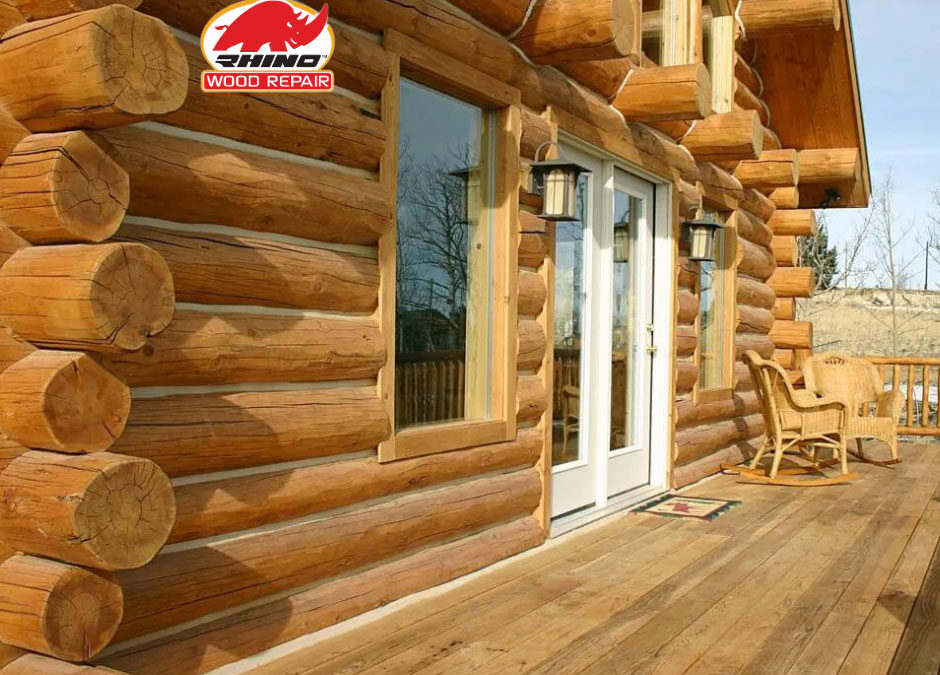
by Robin Pixner | Jun 18, 2024 | News
Outdoor wood structures, such as decks, fences, and pergolas, add beauty and functionality to your property. However, exposure to the elements can lead to deterioration and decay over time. Proper maintenance is crucial to extend the life of your wooden structures and keep them looking their best. In this blog post, we’ll explore expert tips from Robin Pixner, Owner and Chemist at Rhino Wood Repair, on how to maintain your outdoor wood structures year-round.
The Importance of Regular Inspection
The first step in maintaining your outdoor wood structures is to conduct regular inspections. Look for signs of damage, such as:
- Cracks or splits in the wood
- Loose or missing fasteners
- Discolouration or stains
- Soft or spongy areas (indicating rot)
By identifying issues early on, you can address them before they escalate into more significant problems.
Cleaning and Sealing
To keep your outdoor wood looking its best, clean it annually using a mild detergent and a soft-bristled brush. Avoid using pressure washers, as they can damage the wood fibers. After cleaning, allow the wood to dry completely before moving on to the next step.
Applying a Protective Sealant
Once your wood is clean and dry, apply a high-quality sealant to protect it from moisture, UV rays, and other environmental factors. Look for a product that penetrates deep into the wood, such as Rhino Wood Repair’s Wood Sealer. This will help prevent cracking, splitting, and warping.
Addressing Wood Rot and Decay
If you notice signs of wood rot or decay during your inspections, it’s essential to address the issue promptly. Robin Pixner, with his 30+ years of experience, recommends using Rhino Wood Repair’s Wood Hardener and Wood Filler to restore and strengthen damaged wood. These products penetrate deep into the wood fibers, filling voids and creating a solid surface that can be sanded and painted.
Seasonal Maintenance Tips for Wood
Spring
- Inspect your wood structures for any damage that may have occurred during the winter months
- Clean and seal your wood to prepare it for the upcoming outdoor season
Summer
- Regularly clean your wood surfaces to prevent the buildup of dirt and grime
- Monitor your wood for signs of insect activity or damage
Fall
- Remove fallen leaves and debris from your wood structures to prevent moisture retention
- Inspect and repair any damage before the winter season arrives
Winter
- Remove snow and ice from your wood structures to prevent moisture damage
- Cover or store outdoor furniture to protect it from harsh winter weather
FAQs
How often should I clean my outdoor wood structures?
It’s recommended to clean your outdoor wood structures at least once a year, typically in the spring or fall.
Can I use a pressure washer to clean my wood surfaces?
While pressure washers can be effective, they can also damage wood fibers if used improperly. It’s best to use a mild detergent and a soft-bristled brush for cleaning.
How can I tell if my wood has rot or decay?
Signs of wood rot include soft or spongy areas, discoloration, and a musty smell. If you notice any of these signs, it’s important to address the issue promptly.
How often should I apply a sealant to my outdoor wood?
The frequency of sealing depends on the type of wood and the environmental conditions it’s exposed to. As a general rule, it’s a good idea to reseal your wood every 1-3 years. However with Rhino wood repair products, your wood asset lifespan increases by over double that!
About the Author
Robin Pixner is the Owner and Chemist at Rhino Wood Repair, a company specializing in products that repair wood and prevent wood rot. With over 30 years of experience, Robin has developed a deep understanding of wood preservation and maintenance techniques. His expertise has helped countless homeowners extend the life of their outdoor wood structures, ensuring they remain beautiful and functional for years to come.
Summarizing How to Maintain Outdoor Wood Structures Year-Round
Maintaining your outdoor wood structures year-round is essential for preserving their beauty, functionality, and longevity. By following the expert tips outlined in this blog post, you can keep your wooden decks, fences, and pergolas in top condition. Remember to inspect regularly, clean and seal annually, and address any signs of damage or decay promptly. With the right products, like those offered by Rhino Wood Repair, and a commitment to regular maintenance, your outdoor wood structures will continue to enhance your property for years to come.

by Robin Pixner | Jun 14, 2024 | News
PRESERVING THE BEAUTY AND INTEGRITY
Boat Wood Maintenance Products
About the Author
Robin Pixner, the Owner and Chemist at Rhino Wood Repair, is a true industry veteran with over three decades of experience in the field of wood preservation. His passion for boating and his deep understanding of chemistry have led him to develop cutting-edge solutions that have transformed the way boat owners approach wood maintenance.
Understanding the Challenges of Boat Wood Maintenance
Boats endure a unique set of challenges when it comes to wood preservation. The constant exposure to moisture, saltwater, and ultraviolet radiation can wreak havoc on even the most resilient timber. Left unchecked, these elements can lead to:
- Wood rot
- Fading and discolouration
- Cracking and splitting
- Structural weakness
Fortunately, with the right approach and products, you can safeguard your boat’s wood against these formidable foes.
The Secret to A Long-Lasting Wood Boat
Enter Rhino Wood Repair, a pioneering company that has revolutionized the way we protect and maintain boat wood. With over 30 years of experience under the helm of Owner and Chemist Robin Pixner, Rhino Wood Repair has developed a suite of innovative products designed to tackle wood rot and extend the lifespan of your boat’s timber.
The Rhino Wood Repair Advantage
What sets Rhino Wood Repair apart is their proprietary formula, which not only repairs existing wood rot but also fortifies the wood against future damage. Their products penetrate deep into the wood fibers, creating a protective barrier that safeguards your boat from the ravages of moisture, saltwater, and UV radiation.
Key Benefits of Rhino Wood Repair Products
- Arrest and reverse wood rot
- Prevent future rot and decay
- Restore structural integrity
- Enhance water resistance
- Protect against UV damage
- Easy application and long-lasting results
The Rhino Wood Repair Process: A Step-by-Step Guide
Maintaining your boat’s wood with Rhino Wood Repair is a straightforward process that will yield exceptional results. Here’s a step-by-step guide to help you get started:
- Inspect and Prepare: Begin by thoroughly inspecting your boat’s wood for signs of rot, discolouration, or structural damage. Once identified, clean and prepare the affected areas for treatment.
- Apply the Repair Solution: Follow the instructions provided by Rhino Wood Repair to apply their specialized repair solution to the affected areas. This solution will penetrate deep into the wood, halting and reversing the rot.
- Seal and Protect: After the repair solution has had time to work its magic, apply Rhino Wood Repair’s protective sealant. This sealant creates a water-resistant barrier that shields your boat’s wood from future damage.
- Maintain and Enjoy: With your boat’s wood now fortified and protected, establish a regular maintenance routine to ensure long-lasting results. Rhino Wood Repair’s products will keep your boat looking as good as new for years to come.
“keeping your boat’s wood in pristine condition can be a daunting task, especially when faced with the relentless onslaught of the elements.”
For boat enthusiasts, there’s nothing quite like the charm and elegance of a well-maintained wooden vessel. However, keeping your boat’s wood in pristine condition can be a daunting task, especially when faced with the relentless onslaught of the elements. Fear not, as this comprehensive guide will equip you with the knowledge and strategies to ensure your boat’s wood remains a sight to behold for years to come.
Summarizing the Important of Boat Wood Maintenance
Maintaining the beauty and integrity of your boat’s wood is a responsibility that should not be taken lightly. With Rhino Wood Repair’s innovative products and Robin Pixner’s decades of expertise, you can rest assured that your boat’s wood will remain a source of pride and enjoyment for years to come. Invest in the longevity of your vessel today and experience the unparalleled satisfaction of pristine, well-preserved boat wood.
Frequently Asked Questions
Can Rhino Wood Repair products be used on any type of wood?
Yes, Rhino Wood Repair’s solutions are compatible with a wide range of wood types, including teak, mahogany, oak, and more. Their formulas are specifically designed to penetrate and protect various wood fibers effectively.
How long do the effects of Rhino Wood Repair products last?
With proper application and regular maintenance, the effects of Rhino Wood Repair products can last for several years, depending on the severity of the initial damage and the exposure conditions.
Are Rhino Wood Repair products safe for the environment?
Absolutely. Rhino Wood Repair takes environmental sustainability seriously, and their products are formulated to be eco-friendly and biodegradable, ensuring minimal impact on the surrounding ecosystem.
Can Rhino Wood Repair products be used on boats that are already in service?
Yes, Rhino Wood Repair’s solutions are designed to be used on both new and existing boats, making them ideal for ongoing maintenance and repair.
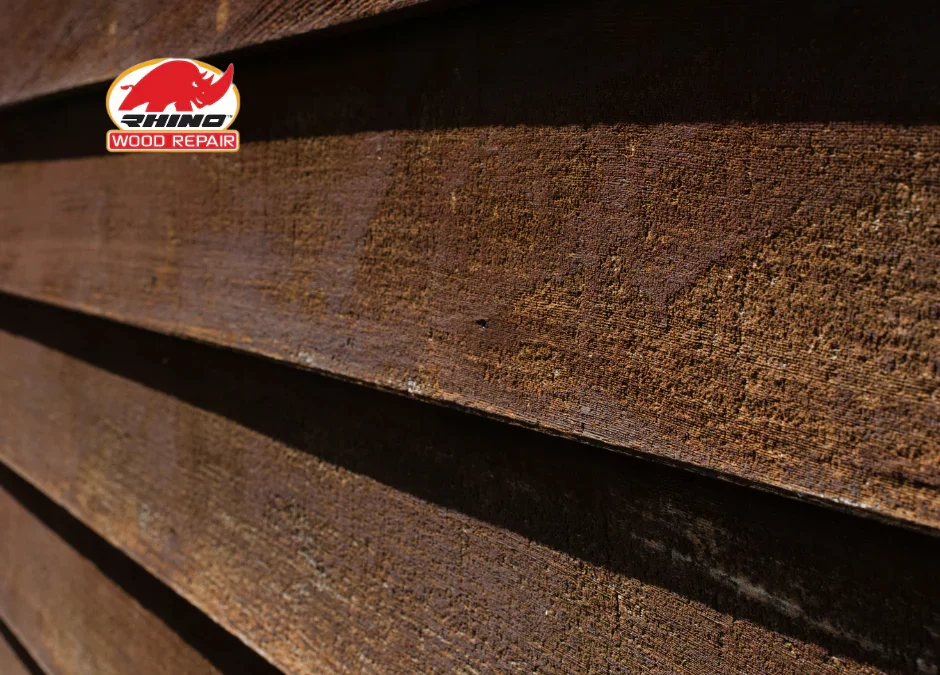
by Robin Pixner | Jun 13, 2024 | News
As a homeowner, maintaining the aesthetic appeal and structural integrity of your property is a top priority. One area that often requires attention is the wood siding, which can suffer from rot, weathering, and other forms of damage over time. Fortunately, there are effective wood siding repair products available to help breathe new life into your home’s exterior. In this article, we’ll explore the top options from Rhino Wood Repair, a company with over 30 years of experience in wood preservation.
Understanding Wood Rot and Its Consequences
Wood rot, caused by fungal decay, is a common issue that can compromise the strength and appearance of your wood siding. Left unchecked, it can lead to costly repairs and even structural damage. Factors like moisture, poor ventilation, and lack of proper maintenance can accelerate the rotting process, making it crucial to address the problem promptly.
Rhino Wood Repair: A Trusted Name in Wood Preservation
Rhino Wood Repair, founded by chemist Robin Pixner, has been at the forefront of wood repair and preservation for over three decades. Their innovative products are designed to not only repair existing damage but also prevent future rot, extending the lifespan of your wood siding.
Top Rhino Wood Repair Products for Wood Siding
1. Rot Repair Epoxy: This two-part epoxy system is specially formulated to repair and restore rotted or damaged wood. It consolidates the remaining sound wood and provides a durable, long-lasting repair.
2. Wood Hardener: If your wood siding is showing signs of softening or deterioration, Rhino Wood Repair’s Wood Hardener can help. It penetrates deep into the wood fibers, restoring strength and stability.
3. Wood Preserver: Prevention is key when it comes to wood rot. Rhino Wood Repair’s Wood Preserver is a concentrated formula that protects against fungal decay, insect damage, and moisture intrusion, ensuring your wood siding stays in top condition for years to come.
The Benefits of Using Rhino Wood Repair Products
- Proven track record of over 30 years in the industry
- Environmentally friendly and low-odor formulations
- Easy-to-use products suitable for DIY projects
- Cost-effective solutions compared to full replacement
- Long-lasting results, extending the life of your wood siding
Frequently Asked Questions
Can I use these products on any type of wood siding?
Yes, Rhino Wood Repair products are compatible with various types of wood siding, including cedar, redwood, and pressure-treated wood.
How long do the repairs typically last?
With proper application and maintenance, repairs made with Rhino Wood Repair products can last for several years, protecting your investment.
Are these products safe for the environment?
Absolutely. Rhino Wood Repair takes pride in offering environmentally friendly and low-odor formulations, ensuring minimal impact on the surroundings.
About the Author
This blog post was written in collaboration with Robin Pixner, the founder and chemist behind Rhino Wood Repair. With over 30 years of experience in the wood repair and preservation industry, Robin has dedicated his career to developing innovative solutions that extend the lifespan of wood structures. His products, including Liquid A/B rot treatment, and wood restoration putty have become trusted names among homeowners and professionals alike.
At Rhino Wood Repair, Robin and his team are committed to providing high-quality, environmentally conscious products that not only repair existing damage but also prevent future issues. Their expertise and passion for wood preservation shine through in every product they offer.
If you’re looking to revive the beauty and structural integrity of your wood siding, trust the experts at Rhino Wood Repair. Their proven solutions will help you protect your investment and enjoy the timeless charm of wood for years to come.
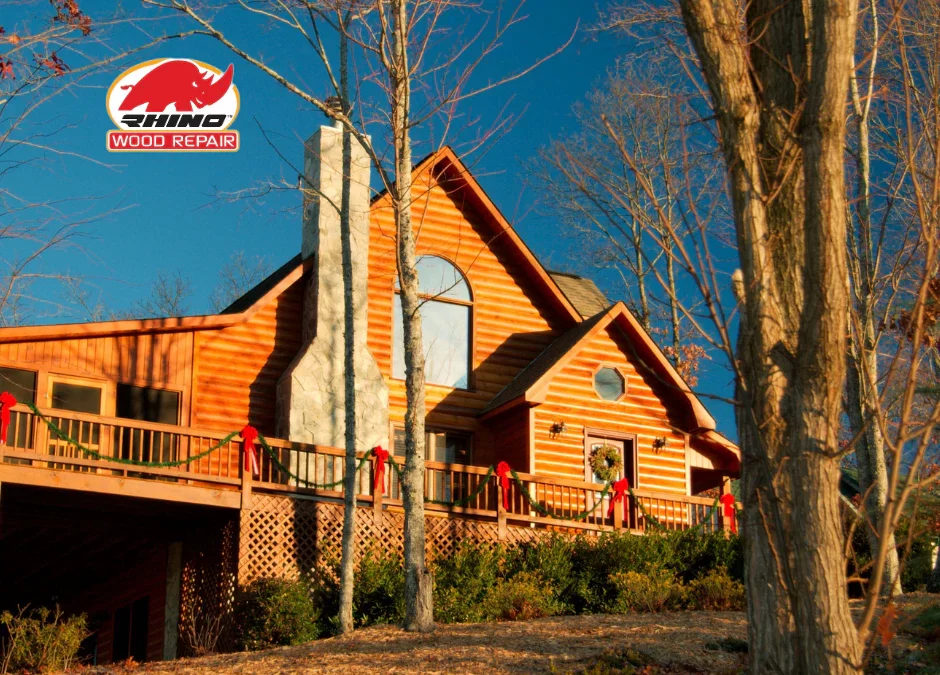
by Robin Pixner | Jun 7, 2024 | News
The Importance of Wood Repair for Your Luxury Getaway
Owning a luxury cabin or vacation home is a dream for many, offering a serene escape from the hustle and bustle of daily life. However, maintaining the beauty and structural integrity of these wooden havens requires diligent care and attention, particularly when it comes to combating the ever-present threat of wood rot and damage. This is where professional wood repair services come into play, ensuring that your cherished retreat remains a picture-perfect oasis for years to come.
Rhino Wood Repair: Experts in Preserving Wooden Sanctuaries
When it comes to safeguarding the longevity of your luxury cabin or vacation home, Rhino Wood Repair stands out as the premier solution. With over three decades of experience, owner and chemist Robin Pixner has honed his expertise in wood repair and preservation, developing innovative products that not only repair existing damage but also prevent future deterioration.
The Rhino Wood Repair Advantage
- Unparalleled Expertise: With 30+ years in the industry, Robin Pixner’s vast knowledge ensures that every wood repair project is approached with the utmost care and precision.
- Cutting-Edge Solutions: Rhino Wood Repair’s proprietary formulations are specifically designed to address the unique challenges of wood repair in luxury cabins and vacation homes, ensuring long-lasting results.
- Environmental Responsibility: Their products are eco-friendly, allowing you to preserve the natural beauty of your wooden sanctuary while minimizing environmental impact.
- Comprehensive Services: From minor repairs to extensive restorations, Rhino Wood Repair offers a comprehensive range of services tailored to your specific needs.
5 Signs Your Luxury Cabin or Vacation Home Needs Professional Wood Repair
- Visible Rot or Decay: Keep an eye out for soft, crumbly, or discoloured wood, as these are telltale signs of wood rot that require immediate attention.
- Structural Instability: If you notice sagging beams, floors, or walls, it could indicate advanced wood deterioration, compromising the structural integrity of your property.
- Insect Infestation: Pests like termites and carpenter ants can wreak havoc on wooden structures, leaving behind tunnels and weakened wood.
- Moisture Issues: Excessive moisture, whether from leaks, humidity, or poor ventilation, can create an ideal environment for wood rot and damage to thrive.
- Aesthetic Concerns: While cosmetic issues like peeling paint or discoloration may seem minor, they could be early indicators of underlying wood damage that requires professional attention.
Frequently Asked Questions
How often should I have my luxury cabin or vacation home inspected for wood damage?
It’s recommended to have a professional wood repair service conduct an inspection at least once a year, or immediately if you notice any signs of damage or deterioration.
Can wood repair services prevent future damage?
Absolutely! Rhino Wood Repair offers specialized treatments and products that not only repair existing damage but also fortify the wood against future rot, insect infestations, and moisture-related issues.
How long does the wood repair process typically take?
The duration of the repair process can vary depending on the extent of the damage and the scope of the project. Minor repairs may be completed in a day or two, while more extensive restorations could take several weeks.
Are Rhino Wood Repair’s products safe for indoor use?
Yes, their products are specially formulated to be low in toxicity and safe for indoor use, ensuring the health and well-being of your family and guests.
About the Author
With over 30 years of experience in the wood repair and preservation industry, Robin Pixner, the owner and chemist at Rhino Wood Repair, has become a trusted name in the field. His passion for protecting the beauty and longevity of wooden structures has driven him to develop innovative solutions that combat wood rot, moisture damage, and insect infestations. Rhino Wood Repair’s products are the result of years of research and a deep understanding of the unique challenges faced by luxury cabins and vacation homes.
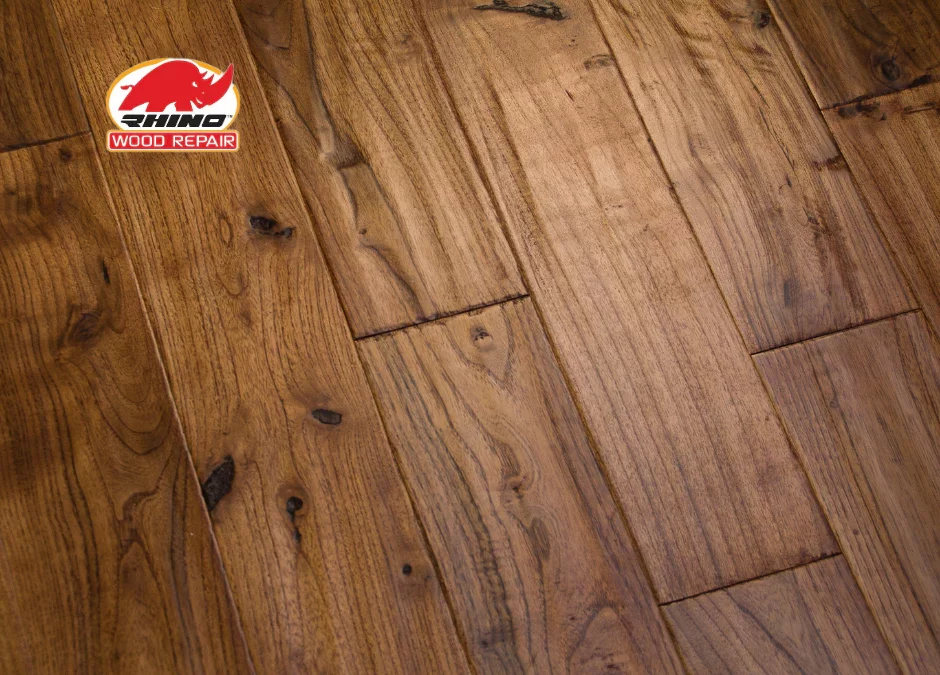
by Robin Pixner | Jun 7, 2024 | News
What is a Hardwood Floor Repair Kit?
A hardwood floor repair kit is an essential toolkit for homeowners and contractors to fix scratches, dents, cracks, and other damage to hardwood floors. These kits typically contain wood filler sticks, color putty, markers, and tools to seamlessly blend repairs into the existing floor.
Why Choose Rhino Wood Repair Kits?
Rhino Wood Repair offers premium hardwood floor repair solutions formulated by chemist Robin Pixner, who has over 30 years of experience in the wood repair industry. Their products are designed to prevent and repair wood rot, extending the lifespan of your hardwood floors.
Key Benefits of Rhino Wood Repair Kits
- Easy to use for DIY repair kits
- Provide long-lasting and durable results
- Color-matched to blend in seamlessly
- Prevent further deterioration and wood rot
- More affordable than replacing floors
Common Hardwood Floor Problems and How to Fix Them
Scratches and Dents
Scratches and dents are inevitable with hardwood floors, especially in high-traffic areas. To fix these:
- Clean the area thoroughly
- Use a wood filler putty to fill the scratch/dent
- Lightly sand and wipe clean
- Apply a color marker matched to your floor’s stain
Cracks and Gaps
As floors age and settle, cracks and gaps can form between boards. Here’s how to repair them:
- Vacuum out any debris in the crack/gap
- Apply a wood filler or flexible acrylic caulk
- Use a putty knife to level the filler flush with the floor
- Wipe away any excess and allow to fully dry
Water Damage and Stains
Water stains and damage can warp and discolor wood floors. To address these issues:
- Thoroughly dry out any wet areas
- Lightly sand the stained area to remove the top layer
- Use a wood bleach or oxalic acid solution
- Apply wood filler and stain to match
FAQ:
How long do Rhino Wood Repair products last?
When applied correctly, Rhino’s wood fillers and repair products can last for years without chipping, cracking or fading. Their proprietary formulas are incredibly durable.
Are the repairs permanent?
While not permanent, Rhino’s repairs are semi-permanent and can extend the life of your floors for 5-10 years before needing replacement.
Can repairs be done on any type of hardwood floor?
Yes, Rhino’s color-matched products work on all types of hardwood including oak, maple, cherry, walnut and more.
How soon can I walk on the repaired floors?
You can walk on the floors 24-48 hours after repairs, but avoid heavy furniture for 3-5 days to allow proper curing.
The Top 5 Reasons to Use Rhino Wood Repair Kits:
- Easy DIY application without special tools
- Save money versus replacing floors
- Prevent further wood rot and deterioration
- Long-lasting and durable repairs
- Color-matched to blend in seamlessly
About the Author
Robin Pixner is the founder and lead chemist at Rhino Wood Repair with over 30 years developing wood repair and preservation products. A true pioneer in the industry, Robin’s proprietary formulations prevent and repair wood rot while restoring floors to their original beauty.
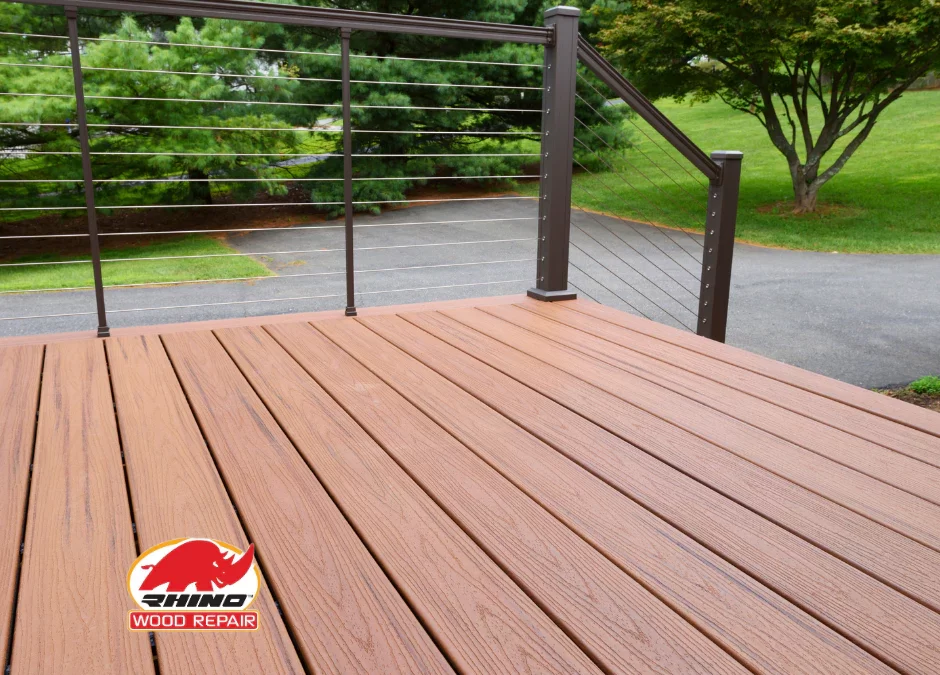
by Robin Pixner | Jun 7, 2024 | News
Owning a wooden deck is a great way to enjoy the outdoors from the comfort of your home. However, wooden decks require proper maintenance to keep them looking beautiful and functioning safely for years to come. With some basic care and the right products, you can significantly extend the lifespan of your treasured deck. Follow these tips from the experts at Rhino Wood Repair.
Prevent and Repair Wood Rot
The #1 Enemy: Moisture
One of the biggest threats to the structural integrity of a wood deck is rot caused by excess moisture penetration. This can happen from:
- Humidity and rain exposure
- Clogged drainage on or around the deck
- Poor ventilation under the deck
Once moisture gets trapped in the wood, fungi start to grow and cause the decay known as wood rot. This severely compromises the load-bearing ability of deck boards and framing.
Inspection is Key
Regularly inspecting all areas of your deck is crucial for catching rot early when it is easier to remedy. Use a flathead screwdriver to poke exterior wood surfaces – if the tool easily penetrates more than 1/8 inch, rot is likely present. Also check for:
- Spongy or crumbly wood texture
- Dipping or sagging deck boards
- Brown, gray or white discolouration
Repair Rotted Wood with Proven Products
If you do discover rotted wood areas, don’t fret – Rhino Wood Repair has professional-grade products to restore the damage. The company’s epoxy wood restorers actually get harder than original wood once cured, rebuilding structural strength.
Proper Cleaning and Sealing
Cleaning and sealing your deck on a regular schedule is one of the easiest ways to protect against wood rot and premature aging. Build these steps into your annual deck maintenance:
- Spring Cleaning – Use a deck cleaner solution and stiff brush to remove built-up grime, mildew, and debris from all deck surfaces.
- Sanding – For optimum new seal penetration, lightly sand after cleaning.
- Sealing – Apply a fresh coat of highly-rated exterior wood sealer or stain. This protective coating blocks moisture absorption.
- Winter Prep – At season’s end, clean off Fall debris and re-seal any worn areas before Winter arrives.
Consider a Waterproof Deck System
For new deck builds or major restorations, maximize protection by installing an integrated waterproof decking system like Rhino’s DuraDeck. This UV-resistant membrane seamlessly covers the entire walking surface and is guaranteed against leaks for decades. No more dealing with rot!
Extend with Add-On Features
In addition to basic wood care, strategically adding the right accessories to your deck design can vastly improve its longevity:
- Pergolas or awnings shield against harsh sun & rain
- Deck drainage systems promote water run-off
- Under-deck drainage and ventilation panels prevent moisture build-up below
- Benches, planters & railings protect edges & stairs
Frequently Asked Questions About How to Extend the Life of Wooden Decks?
How often should I re-seal or re-stain my deck?: Most professional deck contractors recommend cleaning and re-sealing wood decks every 1-2 years depending on weather exposure. However with Rhino wood repair products, your wooden deck lifespan increases by over double that!
Can rotted boards just be replaced?: Spot board replacement is possible with minor, localized rot. But widespread fungal decay means the entire deck’s structural integrity could be compromised, requiring full demolition and re-building.
Is composite decking better than wood?: Composite and PVC deck boards are rot-resistant, but the framing underneath can still develop fungal rot over time. Investing in complete wood repair, sealing and drainage is recommended for all deck materials.
About the Author – How to Extend the Life of Wooden Decks?
This deck life-extension guide was created in partnership with Robin Pixner, Owner and Chemist at Rhino Wood Repair. With over 30 years of experience developing industrial-strength wood repair products, Robin’s epoxy and waterproof systems give contractors and homeowners the longest lasting defense against wood rot and deterioration. Rhino’s proven solutions can be found at major home improvement retailers across North America.
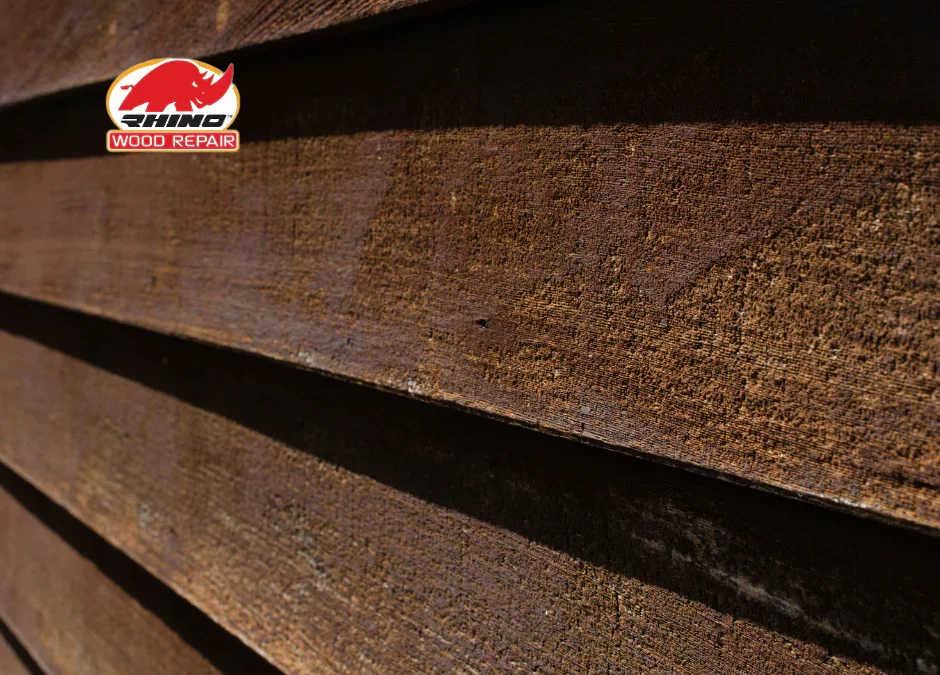
by Robin Pixner | Jun 7, 2024 | News
Wooden furniture adds warmth, character, and timeless beauty to any home. However, without proper care and maintenance, these treasured pieces can succumb to wear and tear, leaving them looking dull, damaged, and worn out. In this comprehensive guide, we’ll share expert tips and tricks to help you make your wooden furniture last for years to come.
The Importance of Maintaining Wooden Furniture
Wooden furniture is an investment that can be passed down through generations if cared for properly. Not only does regular maintenance enhance the furniture’s aesthetic appeal, but it also safeguards its structural integrity and prevents costly repairs or replacements down the line.
Cleaning and Dusting: The Foundation of Wood Care
Dust Regularly
Dust is a wooden furniture’s worst enemy. It accumulates in crevices and can scratch the surface when rubbed against it. Use a soft, lint-free cloth or a microfibre duster to remove dust from your furniture regularly.
Choose the Right Cleaning Products
Avoid using harsh chemicals, abrasive cleaners, or furniture polish containing silicone, as these can damage the wood’s finish. Instead, opt for mild soap and water or specialized wood cleaners formulated for your specific furniture type.
Protecting Your Wooden Furniture
Apply a Protective Finish
A high-quality finish, such as lacquer, varnish, or polyurethane, acts as a barrier against moisture, spills, and scratches. If your furniture’s finish is starting to wear off, consider refinishing it to restore its protective layer.
Use Coasters and Placemats
Moisture and heat can cause unsightly rings and discolouration on unprotected wood surfaces. Always use coasters and placemats to prevent these damaging effects.
Preventing Wood Rot and Decay
Wood rot and decay can severely compromise the structural integrity of your furniture, leading to costly repairs or even the need for replacement. To prevent this, consider the following:
Control Humidity Levels
Excessive moisture can lead to wood rot and mold growth. Use a dehumidifier or air conditioner to maintain optimal humidity levels in your home, typically between 30% and 50%.
Address Water Damage Promptly
If your wooden furniture gets wet, act quickly. Dry it thoroughly with a clean cloth or towel, and consider using a specialized wood repair product to address any potential water damage.
Top 3 Wood Repair and Maintenance Products by Rhino Wood Repair
- Wood Restorer: A powerful formula that restores the natural beauty of weathered, faded, and discoloured wood, reviving its original luster.
- Wood Epoxy Putty: An easy-to-use, two-part epoxy putty that fills cracks, holes, and missing pieces in wooden furniture, providing a long-lasting repair.
- Wood Preservative: A protective coating that safeguards wood against moisture, UV rays, and other environmental factors, prolonging its lifespan.
Frequently Asked Questions
How often should I dust my wooden furniture?: Aim to dust your wooden furniture at least once a week, or more frequently if it’s located in a high-traffic area or a dusty environment.
Can I use regular household cleaners on my wooden furniture?: It’s best to avoid using harsh chemicals or abrasive cleaners, as they can damage the wood’s finish. Stick to mild soap and water or specialized wood cleaners.
How do I know if my wooden furniture needs refinishing?: If the finish is cracked, peeling, or severely scratched, it’s time to consider refinishing your furniture to protect the wood and restore its appearance.
Can wood rot be repaired?: Yes, in many cases, wood rot can be addressed using specialized wood repair products like those offered by Rhino Wood Repair. However, severe cases may require professional assistance or replacement.
About the Author
This blog post was written in consultation with Robin Pixner, the Owner and Chemist at Rhino Wood Repair. With over 30 years of experience in the industry, Robin has dedicated his career to developing innovative and effective products that repair and preserve wood, extending its lifespan and beauty. Rhino Wood Repair’s line of products is trusted by homeowners, woodworkers, and professionals alike, providing long-lasting solutions for various wood repair and maintenance needs.
By following the tips and recommendations outlined in this guide and utilizing Rhino Wood Repair’s products, you can ensure that your cherished wooden furniture remains a stunning centrepiece in your home for years to come.
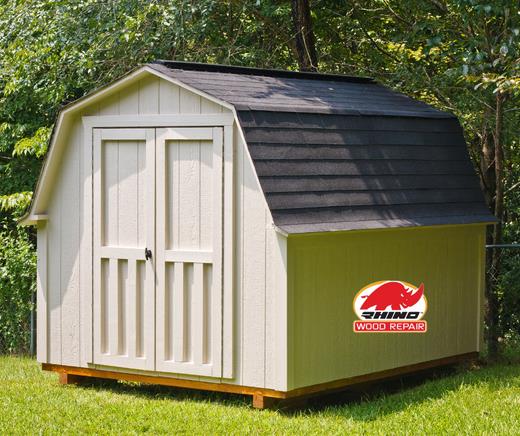
by Robin Pixner | May 24, 2024 | News
Protect Your Shed with Effective Wood Treatment: A Comprehensive Guide
Are you tired of dealing with wood rot, unsightly discolouration, and structural damage to your beloved shed? Look no further than Rhino Wood Repair – the ultimate solution for preserving the longevity and aesthetic appeal of your wooden structures.
The Importance of Wood Treatment for Sheds
Sheds are often overlooked when it comes to maintenance, but they play a crucial role in safeguarding our tools, equipment, and outdoor belongings. Neglecting to treat the wood can lead to costly repairs or even the need for a complete replacement. By investing in proper wood treatment, you can extend the lifespan of your shed and save money in the long run.
Common Wood Problems Faced by Shed Owners
- Wood Rot: Caused by fungi that feed on the cellulose and lignin in wood, wood rot can weaken the structural integrity of your shed, leading to potential collapse.
- Insect Infestations: Termites, carpenter ants, and other wood-boring insects can wreak havoc on untreated wood, leaving behind unsightly tunnels and compromising the shed’s structural stability.
- UV Damage: Prolonged exposure to sunlight can cause wood to become brittle, discolored, and prone to cracking and splitting.
- Moisture Damage: Excess moisture can lead to warping, swelling, and the growth of mold and mildew, ultimately degrading the wood’s integrity.
The Rhino Wood Repair Advantage
Rhino Wood Repair offers a comprehensive range of wood treatment products that address these common issues, providing shed owners with a reliable and long-lasting solution. Their innovative formulations are designed to:
- Eliminate and prevent wood rot
- Deter insect infestations
- Protect against UV damage
- Resist moisture damage
By utilizing Rhino Wood Repair’s cutting-edge products, you can ensure your shed remains in pristine condition for years to come.
Frequently Asked Questions (FAQs)
- How often should I treat my shed with Rhino Wood Repair products?
The frequency of treatment depends on factors such as the shed’s age, exposure to the elements, and the severity of existing damage. Generally, it’s recommended to treat your shed annually for optimal protection.
- Can Rhino Wood Repair products be used on other wooden structures besides sheds?
Absolutely! Rhino Wood Repair’s products are versatile and can be applied to various wooden structures, including fences, decks, pergolas, and even wooden furniture.
- Are Rhino Wood Repair products environmentally friendly?
Yes, Rhino Wood Repair takes pride in offering eco-friendly solutions that are safe for both people and the planet. Their products are formulated to be low in volatile organic compounds (VOCs) and biodegradable.
Top 5 Benefits of Using Rhino Wood Repair Products
- Long-lasting protection against wood damage
- Easy application process
- Cost-effective solution compared to replacement
- Environmentally friendly formulations
- Enhances the aesthetic appeal of your shed
Take Action Now!
Don’t let wood rot, insect infestations, or weathering take a toll on your beloved shed. Trust Rhino Wood Repair’s proven solutions to preserve and protect your investment. See our range of wood treatment products and take the first step towards a worry-free, beautifully maintained shed.
Remember, by investing in proper wood treatment, you’re not only safeguarding your shed but also contributing to a more sustainable future for your outdoor spaces. Embrace the power of Rhino Wood Repair and enjoy a lifetime of worry-free shed ownership.
About the Author
This blog post is brought to you by Robin Pixner, the owner and chemist behind Rhino Wood Repair. With years of expertise in the field, Robin has dedicated his career to developing innovative and effective wood treatment products that repair and protect wood from the ravages of time and the elements.
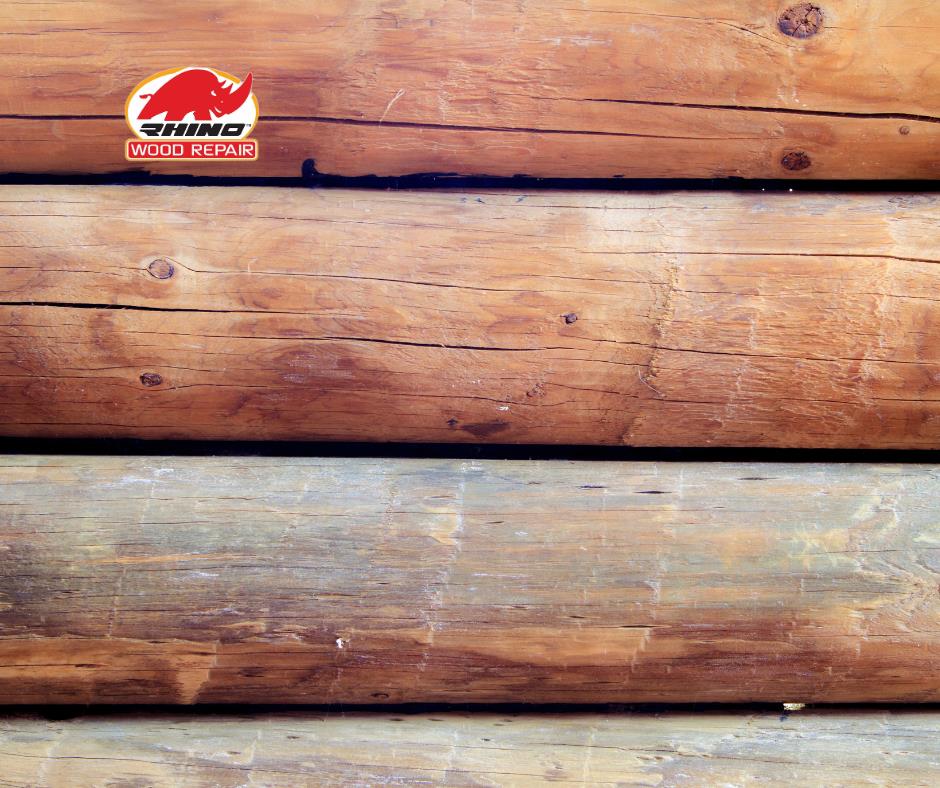
by Robin Pixner | May 21, 2024 | News
How to Repair Rotted Wood on a Log Cabin: A Comprehensive Guide
Looking to restore your log cabin to its former glory? Dealing with rotted wood can be a daunting task, but fear not! With the right approach and the help of experts like Rhino Wood Repair, you can breathe new life into your beloved cabin. In this comprehensive guide, we’ll explore the ins and outs of repairing rotted wood, ensuring your log cabin stands tall for years to come.
Understanding Wood Rot: The Silent Culprit
Before diving into the repair process, it’s crucial to understand the root cause of wood rot. Wood rot is primarily caused by fungal organisms that thrive in damp, humid environments. These fungi feed on the cellulose and lignin components of wood, causing it to weaken and eventually crumble. See here for best wood rot repair products.
Common Causes of Wood Rot in Log Cabins
- Excessive moisture from leaks, condensation, or poor ventilation
- Improper construction or maintenance practices
- Exposure to harsh weather conditions
- Insect infestations that damage the wood’s integrity
The Step-by-Step Repair Process
Repairing rotted wood on a log cabin requires a systematic approach to ensure long-lasting results. Here’s a step-by-step guide to help you tackle the task:
- Identify and Remove Rotted Wood: Inspect your log cabin thoroughly and identify areas with significant rot. Use a screwdriver or awl to probe the wood and determine the extent of the damage. Remove all rotted wood sections, taking care not to damage the surrounding healthy wood.
- Prepare the Area: Once the rotted wood is removed, clean the affected area thoroughly. Use a wire brush or sandpaper to remove any remaining decayed material, ensuring a clean surface for the repair process.
- Apply a Wood Consolidant: Products like Rhino Wood Repair’s wood consolidants can help strengthen and solidify the remaining wood fibers, providing a stable base for the repair.
- Fill the Void: After the wood consolidant has cured, it’s time to fill the void left by the rotted wood. Rhino Wood Repair offers a range of epoxy wood repair products that can be easily molded and shaped to match the contours of your log cabin.
- Finish and Seal: Once the epoxy repair has cured, sand the area to achieve a smooth finish. Apply a protective sealant or stain to match the surrounding wood and prevent future moisture intrusion.
Rhino Wood Repair: Your Partner in Cabin Restoration
When it comes to repairing rotted wood on log cabins, Rhino Wood Repair is a trusted name in the industry. Founded by Robin Pixner, a chemist with years of experience in wood preservation, Rhino Wood Repair offers a range of innovative products designed to extend the life of wood structures.
About the Author: Robin Pixner
Robin Pixner, the founder and chemist behind Rhino Wood Repair, has dedicated his career to developing cutting-edge solutions for wood preservation and repair. With a deep understanding of the challenges faced by log cabin owners, Robin has formulated specialized products that not only repair rotted wood but also prevent future rot, ensuring your cabin remains a cherished home for generations to come.
FAQs: Addressing Common Concerns
- How long does the repair process take? The duration of the repair process can vary depending on the extent of the damage and the size of the area being repaired. However, with Rhino Wood Repair’s fast-curing products, you can expect a significant portion of the work to be completed within a few days.
- Is the repair permanent? While no repair is truly permanent, the products and techniques used by Rhino Wood Repair are designed to provide long-lasting solutions. With proper maintenance and care, your repaired log cabin can withstand the test of time.
- Can I do the repairs myself? While some minor repairs can be tackled as a DIY project, it’s recommended to seek professional assistance for extensive or structural damage. Rhino Wood Repair offers expert guidance and training to ensure the repairs are performed correctly and safely.
- How much will the repair cost? The cost of repairing rotted wood on a log cabin can vary depending on the extent of the damage, the products used, and the labor involved. Rhino Wood Repair provides competitive pricing and can provide a detailed estimate based on your specific needs.
The Ultimate Checklist for Log Cabin Wood Repair
To ensure a successful repair process, follow this ultimate checklist:
- Inspect your log cabin thoroughly for signs of wood rot
- Gather the necessary tools and materials, including Rhino Wood Repair products
- Remove all rotted wood sections carefully
- Clean and prepare the affected area
- Apply a wood consolidant for added strength
- Fill the void with Rhino Wood Repair’s epoxy wood repair products
- Sand and finish the repaired area to match the surrounding wood
- Apply a protective sealant or stain
- Maintain and inspect your log cabin regularly to prevent future rot
By following these steps and utilizing the expertise of Rhino Wood Repair, you can breathe new life into your property with proper log home restoration, ensuring it remains a cherished retreat for years to come.
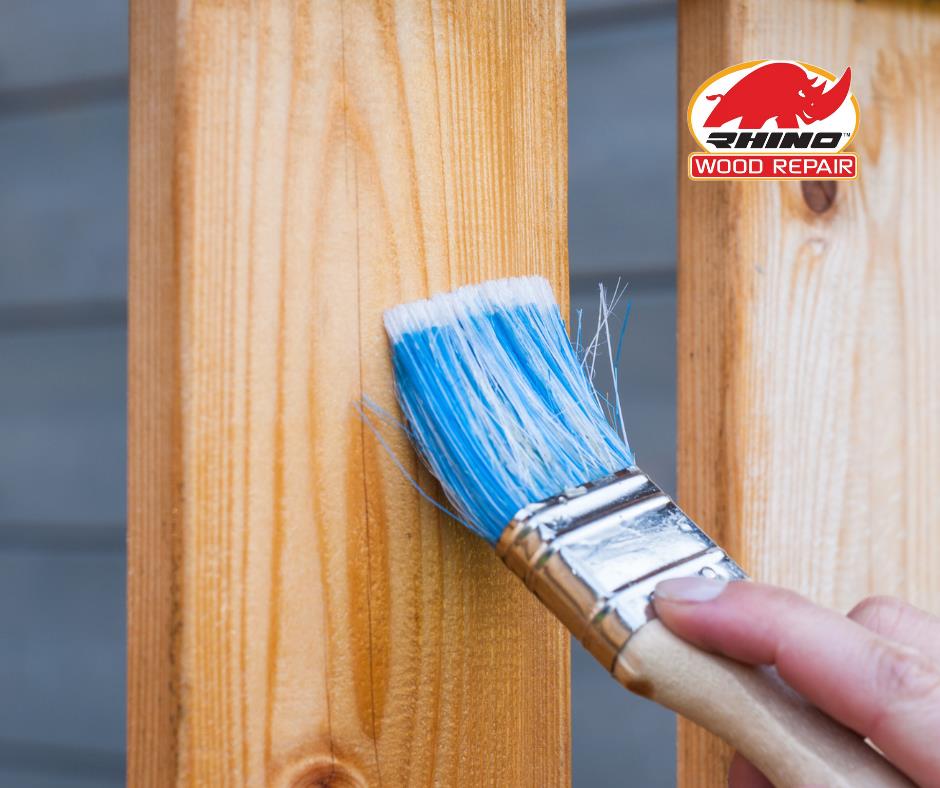
by Robin Pixner | May 17, 2024 | News
If you have an old fence that’s been weathered by the elements, you might be wondering if it’s possible to give it a fresh new look with a coat of stain. While staining an old fence is certainly an option, there are a few important factors to consider to ensure the best possible results. In this comprehensive guide, we’ll explore the steps involved in staining an old fence, the benefits of using a quality stain, and how incorporating Rhino Wood Repair products can significantly enhance the protection and longevity of your fence.
Preparing an Old Fence for Staining
Before you can apply a new stain to your old fence, proper preparation is crucial for optimal adhesion and long-lasting results:
Cleaning and Stripping
- Thoroughly clean the fence surface to remove dirt, grime, and any loose or peeling paint or stain.
- Use a chemical stripper or sanding to remove any remaining old stain or paint, ensuring a clean, bare wood surface.
Addressing Damage and Repairs
- Inspect the fence for any damaged, rotted, or loose boards and replace them as needed.
- Consider incorporating Rhino Wood Repair products to address any weakened or damaged wood before staining, ensuring a strong and durable foundation.
Sanding and Final Preparation
- Sand the entire fence surface to create a rough texture for better stain adhesion.
- Remove any remaining dust or debris from the sanding process.
Choosing the Right Stain for Fence
When it comes to staining an old fence, selecting the right stain is crucial for achieving the desired look and longevity. Here are some factors to consider:
Stain Types
- Oil-based stains: Provide superior penetration and water repellency but can be more difficult to apply and maintain.
- Water-based stains: Easier to apply and clean up, but may not offer the same level of protection as oil-based stains.
- Semi-transparent stains: Allow the natural wood grain to show through while providing some UV protection.
- Solid stains: Offer a more opaque finish and better UV protection but can obscure the wood’s natural beauty.
Stain Colours and Finishes
Consider the desired final look for your fence and choose a stain color and finish that complements your home’s exterior and landscaping.
The Benefits of Using Rhino Wood Repair Products Before Staining
While staining an old fence can breathe new life into its appearance, addressing any underlying wood damage is crucial for long-lasting results. This is where Rhino Wood Repair products can make a significant difference:
- Strengthen Weakened Wood: Rhino Wood Repair products are formulated to penetrate deep into the wood fibers, strengthening and reinforcing weakened or damaged areas.
- Enhance Stain Adhesion: By addressing any underlying wood issues, Rhino Wood Repair products create a solid foundation for the stain to adhere to, ensuring better protection and longevity.
- Extend the Life of Your Fence: By incorporating Rhino Wood Repair products into your fence maintenance routine, you can significantly extend the lifespan of your fence, reducing the need for frequent replacements and saving you money in the long run.
FAQs about Staining Old Fences
How long will a stained fence last?
The longevity of a stained fence depends on various factors, including the quality of the stain, the fence’s exposure to the elements, and the condition of the wood. With proper preparation, high-quality stain, and regular maintenance, a stained fence can last anywhere from 3-5 years before requiring a fresh coat.
Can I stain over an old, weathered fence?
While it’s possible to stain over an old, weathered fence, it’s generally not recommended. The old stain or paint should be removed first to ensure proper adhesion and penetration of the new stain.
Can I use the same stain on both wood and vinyl fences?
No, it’s important to use stains specifically formulated for the type of material you’re working with. Wood stains are not suitable for vinyl fences and vice versa.
How long do I need to wait before staining a new fence?
It’s generally recommended to wait at least 6 months before staining a new, pressure-treated wood fence. This allows the wood to dry and cure properly, ensuring better stain penetration and adhesion.
Top Tips for Staining an Old Fence:
- Thoroughly clean and prepare the fence surface for optimal stain adhesion.
- Address any damaged or weakened wood with Rhino Wood Repair products before staining.
- Choose a high-quality, reputable stain suitable for your climate and exposure conditions.
- Follow the manufacturer’s instructions carefully for proper application and coverage rates.
- Maintain your stained fence by regularly cleaning, inspecting, and re-staining as needed.
About the Author
This comprehensive guide on staining an old fence was brought to you by Rhino Wood Repair, a company dedicated to providing top-quality wood repair solutions. Our founder and chemist, Robin Pixner, has years of experience in the industry and a passion for helping homeowners and professionals alike achieve flawless woodwork.
At Rhino Wood Repair, we understand the importance of preserving the beauty and longevity of wood surfaces. Our products are carefully formulated to ensure exceptional results, whether you’re tackling a small DIY project or a large-scale restoration.
With our expertise and commitment to excellence, you can trust Rhino Wood Repair to provide you with the knowledge and tools you need to tackle any wood repair project with confidence. Visit our website or contact us today to learn more about our innovative wood repair solutions. Best products for people wondering can I stain an old fence?

by Robin Pixner | May 14, 2024 | News
If you’re a proud owner of a beautiful wooden deck, you know how important it is to protect it from the harsh elements. Deck stains are a popular choice for enhancing the natural beauty of wood while providing a protective barrier against moisture, UV rays, and other environmental factors. However, not all deck stains are created equal, and their effectiveness in protecting wood can vary greatly. In this comprehensive guide, we’ll explore the role of deck stains in wood protection and what you need to know to ensure your deck remains in pristine condition for years to come.
Understanding Deck Stains
What is Deck Stain?
Deck stains are specialized coatings designed to penetrate deep into the wood surface, providing both color and protection. These stains can range from semi-transparent to solid colors, allowing you to achieve the desired look while still showcasing the natural grain of the wood.
Types of Deck Stains
There are several types of deck stains available on the market, each with its own advantages and drawbacks:
- Oil-based stains: Provide superior penetration and water repellency but can be more difficult to apply and maintain.
- Water-based stains: Easier to apply and clean up, but may not offer the same level of protection as oil-based stains.
- Semi-transparent stains: Allow the natural wood grain to show through while providing some UV protection.
- Solid stains: Offer a more opaque finish and better UV protection but can obscure the wood’s natural beauty.
Deck Stain Protect Wood?
While deck stains can provide some level of protection, their effectiveness depends on several factors:
- Wood condition: Properly prepping and maintaining the wood surface is crucial for optimal stain performance.
- Application techniques: Following the manufacturer’s instructions and applying the stain correctly can significantly impact its longevity and protective properties.
- Environmental conditions: Extreme temperatures, moisture levels, and UV exposure can affect the stain’s durability over time.
- Maintenance: Regular cleaning and reapplication as recommended by the manufacturer are essential for maintaining the stain’s protective qualities.
Enhancing Deck Stain Protection
While deck stains offer valuable protection, there are additional measures you can take to further enhance your deck’s longevity:
- Use a wood preservative: Applying a wood preservative before staining can help protect against rot, decay, and insect damage.
- Incorporate wood repair products: Products like those from Rhino Wood Repair can effectively address weakened wood and enhance the durability and longevity of coatings like paint and stain.
- Maintain proper drainage: Ensure your deck has adequate drainage to prevent water pooling, which can lead to rot and premature stain failure.
- Regularly clean and inspect: Routinely clean and inspect your deck for signs of wear or damage, addressing any issues promptly.
Why Choose Rhino Wood Repair Products for Your Deck Stain Project?
Rhino Wood Repair products not only effectively address weakened wood but also enhance the durability and longevity of coatings like paint and stain. By incorporating Rhino Wood Repair products into your project, you get the best quality results!
FAQs about Deck Stains and Wood Protection
How often should I re-stain my deck?
The frequency of re-staining depends on various factors, including the type of stain used, exposure to sunlight and weather, and the condition of the wood. Most manufacturers recommend re-staining every 1-3 years for optimal protection.
Can I apply deck stain over an old, weathered surface?
While it is possible to apply deck stain over an old, weathered surface, proper surface preparation is crucial. The old stain or finish must be removed, and the wood must be cleaned and sanded to ensure proper adhesion and penetration of the new stain.
Will deck stain protect against mold and mildew?
Some deck stains contain additives that can help prevent mold and mildew growth, but their effectiveness can be limited in damp or shaded areas. Proper ventilation, cleaning, and maintaining a dry surface are essential for preventing mold and mildew growth.
Can I use deck stain on other outdoor wood surfaces?
Yes, many deck stains are suitable for use on other outdoor wood surfaces, such as fences, pergolas, and outdoor furniture. However, it’s always best to check the manufacturer’s recommendations for specific applications.
Top Tips for Protecting Your Deck with Stain:
- Choose a high-quality, reputable deck stain suitable for your climate and exposure conditions.
- Properly prepare the wood surface by cleaning, sanding, and addressing any necessary repairs.
- Follow the manufacturer’s instructions carefully for proper application and coverage rates.
- Consider incorporating wood repair products like those from Rhino Wood Repair for enhanced protection and longevity.
- Maintain your deck by regularly cleaning, inspecting, and re-staining as needed.
About the Author
This comprehensive guide on deck stain protection was brought to you by Rhino Wood Repair, a company dedicated to providing top-quality wood repair solutions. Our founder and chemist, Robin Pixner, has years of experience in the industry and a passion for helping homeowners and professionals alike achieve flawless woodwork.
At Rhino Wood Repair, we understand the importance of preserving the beauty and longevity of wood surfaces. Our products are carefully formulated to ensure exceptional results, whether you’re tackling a small DIY project or a large-scale restoration.
With our expertise and commitment to excellence, you can trust Rhino Wood Repair to provide you with the knowledge and tools you need to tackle any wood repair project with confidence. Visit our website or contact us today to learn more about our innovative wood repair solutions. See the best products for deck stain here.

by Robin Pixner | May 11, 2024 | News
Epoxy coatings have become a popular choice for protecting and enhancing wood surfaces, thanks to their durability, seamless finish, and resistance to moisture and chemicals. However, as with any DIY project, several potential pitfalls can occur if the application process is not executed correctly. In this comprehensive guide, we’ll explore what can go wrong when epoxy coating over wood and how to prevent these issues for a flawless finish.
Common Epoxy Coating Issues
Fisheyes and Craters
Fisheyes and craters are small, crater-like imperfections that can appear on the surface of the epoxy coating. These defects are often caused by contamination or improper surface preparation, which prevents the epoxy from adhering correctly.
Cloudy or Hazy Finish
A cloudy or hazy appearance in the epoxy coating can result from various factors, including improper mixing, insufficient hardener, or exposure to moisture during the curing process.
Soft or Sticky Areas
If the epoxy coating remains soft or sticky after the recommended curing time, it could be due to incorrect mixing ratios, insufficient hardener, or improper application techniques.
Peeling or Delamination
Peeling or delamination occurs when the epoxy coating separates from the wood surface. This issue is typically caused by inadequate surface preparation, contamination, or incompatibility between the epoxy and the wood substrate.
Preventing Epoxy Coating Issues
Surface Preparation
Proper surface preparation is crucial for a successful epoxy coating application. Follow these steps:
- Clean the wood surface thoroughly, removing any dirt, grease, or contaminants.
- Sand the surface to create a roughened texture for better adhesion.
- Remove all dust and debris from the sanding process.
Mixing and Application
Carefully follow the manufacturer’s instructions for mixing and applying the epoxy coating:
- Mix the epoxy resin and hardener in the correct ratios, using a clean container and mixing stick.
- Ensure thorough mixing to avoid incomplete curing or soft spots.
- Apply the epoxy coating in thin, even layers, following the recommended coverage rates and application techniques.
Environmental Conditions
Pay close attention to the environmental conditions during application and curing:
- Maintain the recommended temperature range for proper curing.
- Ensure adequate ventilation to prevent moisture buildup or contamination.
- Avoid drafts or excessive air movement, which can introduce dust or debris.
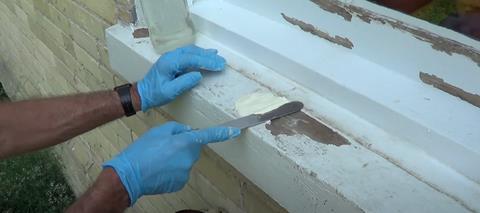
FAQs about Epoxy Coating Over Wood
Can I apply epoxy over stained or painted wood?
While it is possible to apply epoxy over stained or painted wood, proper surface preparation is crucial. The existing finish must be thoroughly deglossed or sanded to ensure proper adhesion.
How long does epoxy take to cure?
Curing times can vary depending on the specific epoxy product and environmental conditions. Typically, epoxy coatings can take anywhere from 24 to 72 hours to fully cure.
Can I recoat or touch up an existing epoxy coating?
Yes, it is possible to recoat or touch up an existing epoxy coating, but the surface must be properly prepared by sanding and cleaning to ensure proper adhesion.
Is epoxy coating over wood food-safe?
Not all epoxy coatings are food-safe. If you plan to use the coated surface for food preparation or consumption, ensure you choose a specifically formulated food-safe epoxy coating.
Top Tips for Successful Epoxy Coating Over Wood:
- Thoroughly clean and prepare the wood surface for optimal adhesion.
- Follow the manufacturer’s mixing and application instructions precisely.
- Maintain the recommended temperature and ventilation conditions during application and curing.
- Apply the epoxy coating in thin, even layers for a smooth, consistent finish.
- Allow sufficient curing time before subjecting the surface to heavy use or wear.
About the Author
This comprehensive guide on potential issues with epoxy coating over wood was brought to you by Rhino Wood Repair, a company dedicated to providing top-quality wood repair solutions. Our founder and chemist, Robin Pixner, has years of experience in the industry and a passion for helping homeowners and professionals alike achieve flawless woodwork.
At Rhino Wood Repair, we understand the importance of preserving the beauty and longevity of wood surfaces. Our products are carefully formulated to ensure exceptional results, whether you’re tackling a small DIY project or a large-scale restoration.
With our expertise and commitment to excellence, you can trust Rhino Wood Repair to provide you with the knowledge and tools you need to tackle any wood repair project with confidence. Visit our website or contact us today to learn more about our innovative wood repair solutions. See our wood repair products here.
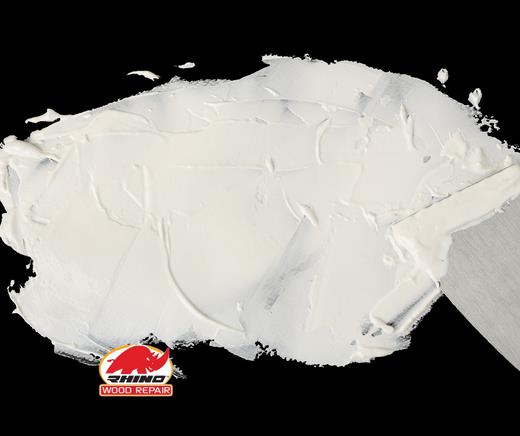
by Robin Pixner | May 8, 2024 | blogs, News
Are you dealing with unsightly holes, cracks, or dents in your wood surfaces? Don’t let them ruin the beauty of your woodwork! Applying wood filler is an easy and cost-effective solution to restore the smooth and flawless appearance of your wooden furniture, floors, or trim. In this comprehensive guide, we’ll walk you through the process of choosing the right wood filler and applying it like a pro.
Understanding Wood Filler
What is Wood Filler?
Wood filler is a putty-like compound designed to fill gaps, holes, and imperfections in wood surfaces. It’s typically made from a combination of wood fibers, resins, and other additives, allowing it to blend seamlessly with the surrounding wood once dry.
Types of Wood Filler
Not all wood fillers are created equal. Here are some common types:
- Water-based: Easy to clean up and environmentally friendly.
- Solvent-based: Stronger and more durable, but with a stronger odor.
- Epoxy-based: Ideal for larger holes and cracks, as it dries rock-hard.
- Stainable: Designed to accept stains and finishes for a seamless match.
Preparing the Surface
Proper surface preparation is crucial for successful wood filler application. Here are the steps to follow:
- Clean the area: Remove any loose debris, dust, or dirt from the surface using a vacuum or a clean cloth.
- Sand the area: Lightly sand the surface around the imperfection to create a smooth transition and help the wood filler adhere better.
- Remove any debris: Vacuum or wipe away any remaining dust or debris from the sanding.
Applying the Wood Filler
Now that your surface is prepped, it’s time to apply the wood filler. Follow these steps for a flawless finish:
- Read the manufacturer’s instructions carefully for any specific application guidelines.
- Scoop out a small amount of wood filler onto a putty knife or a piece of cardboard.
- Press the wood filler firmly into the imperfection, ensuring it fills the gap completely.
- Use a putty knife or your finger to smooth the wood filler flush with the surrounding surface.
- Allow the wood filler to dry completely according to the manufacturer’s instructions.
Sanding and Finishing
Once the wood filler has fully dried, it’s time to sand and finish the surface:
- Lightly sand the area with fine-grit sandpaper (220-grit or higher) to create a smooth, even surface.
- Wipe away any remaining dust or debris.
- If desired, apply a stain or finish to the area to match the surrounding wood.
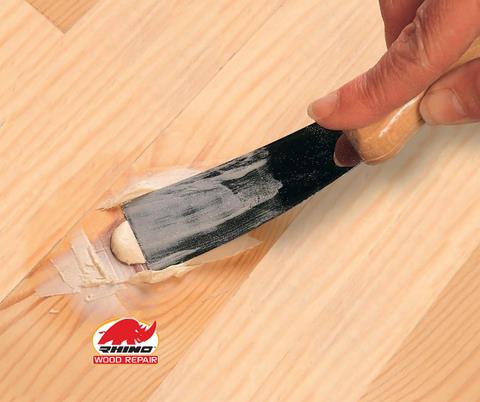
FAQs about Wood Filler
Can I use wood filler on exterior surfaces?
While some wood fillers are designed for exterior use, it’s generally recommended to use an exterior-grade wood filler or epoxy for outdoor projects to ensure long-lasting durability.
How long does wood filler take to dry?
Drying times can vary depending on the type of wood filler, humidity, and temperature conditions. Water-based wood fillers typically dry within 1-2 hours, while solvent-based and epoxy fillers may take several hours or overnight to fully cure.
Can I stain over wood filler?
Yes, many wood fillers are designed to accept stains and finishes. However, it’s essential to choose a stainable wood filler if you plan on staining the area to ensure a seamless match.
How do I clean up excess wood filler?
Excess wood filler can be removed before it dries using a damp cloth or mineral spirits (for solvent-based fillers). Once dried, sanding is the best way to remove any excess or smooth out the surface.
Top Tips for Applying Wood Filler:
- Work in multiple thin layers for deeper imperfections.
- Use a putty knife or your finger to smooth the wood filler flush with the surrounding surface.
- Allow the wood filler to dry completely before sanding or finishing.
- Sand in the direction of the wood grain for a seamless finish.
- Always follow the manufacturer’s instructions for best results.
About the Author
This comprehensive guide on applying wood filler like a pro was brought to you by Rhino Wood Repair, a company dedicated to providing top-quality wood repair solutions. Our founder and chemist, Robin Pixner, has years of experience in the industry and a passion for helping homeowners and professionals alike achieve flawless woodwork.
At Rhino Wood Repair, we understand the importance of preserving the beauty and longevity of wood surfaces. Our products are carefully formulated to ensure exceptional results, whether you’re tackling a small DIY project or a large-scale restoration.
With our expertise and commitment to excellence, you can trust Rhino Wood Repair to provide you with the knowledge and tools you need to tackle any wood repair project with confidence. Visit our website or contact us today to learn more about our innovative wood repair solutions. See our wood rot repair treatments here.
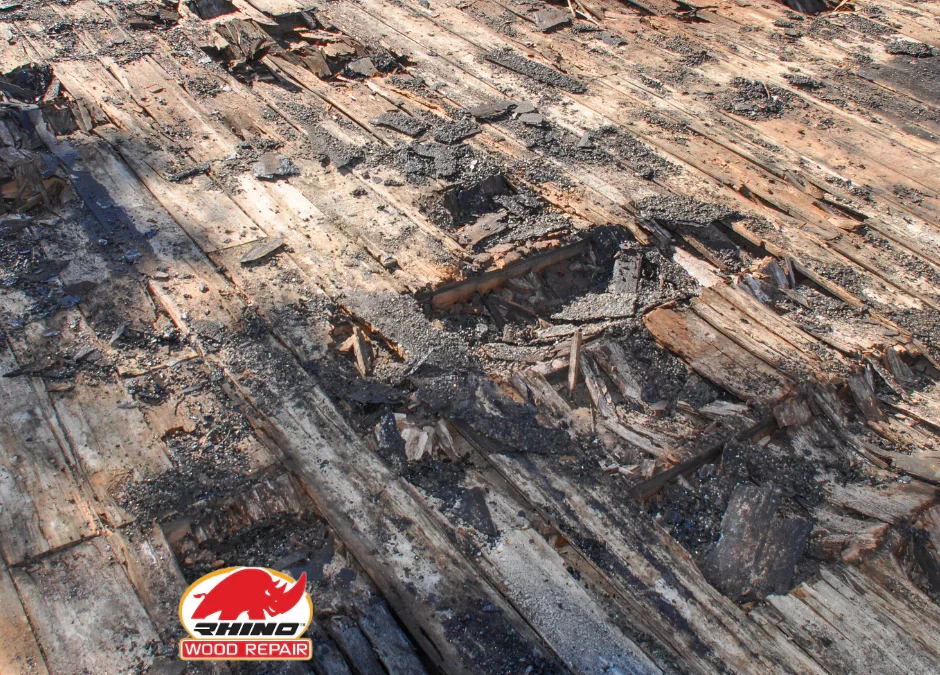
by Robin Pixner | Jun 7, 2024 | News
Wood is a remarkably durable and versatile material, widely used in construction, furniture, and various other applications. However, despite its strength, wood is susceptible to rot and decay under certain conditions. Knowing how long it takes for wood to rot can help you take preventive measures and address any issues promptly before they escalate. In this comprehensive guide, we’ll explore the factors that influence wood rot and provide insights into the typical timeline for this process to occur.
Factors Affecting Wood Rot
Moisture Content
Moisture is the primary catalyst for wood rot. Wood with a moisture content above 20% creates an ideal environment for fungi and bacteria to thrive, leading to the breakdown of the wood’s cellular structure. Sources of moisture can include excessive humidity, leaks, poor ventilation, or direct exposure to water.
Wood Type
Different wood species have varying levels of natural resistance to rot. Hardwoods like oak and teak tend to be more resistant than softwoods like pine or cedar. The density and chemical composition of the wood play a significant role in its durability against rot and decay.
Environmental Conditions
Temperature, humidity, and exposure to sunlight can all impact the rate at which wood rots. Generally, warm and humid environments with limited air circulation provide ideal conditions for fungi and bacteria to thrive, accelerating the rot process.
Typical Timelines for Wood Rot
While the exact timeline can vary depending on the specific conditions, here are some general guidelines for how long it takes for wood to rot:
Untreated Wood in Ideal Conditions
In optimal conditions for rot, such as high moisture levels, warm temperatures, and poor ventilation, untreated wood can begin to show signs of decay within a few months. Significant structural damage can occur within 1-2 years if the conditions persist.
Treated or Naturally Rot-Resistant Wood
Wood that has been treated with preservatives or naturally rot-resistant species like cedar or redwood can take significantly longer to rot. Under ideal conditions, treated wood may not show signs of decay for several years, while naturally rot-resistant wood can last up to a decade or more before succumbing to rot.
HWell-Maintained and Protected Wood
Wood that is properly maintained, protected from moisture, and kept in well-ventilated environments can have an exceptionally long lifespan. With regular inspection and prompt repairs, well-maintained wood structures and furniture can last for decades or even centuries before experiencing significant rot issues.
Preventing and Addressing Wood Rot
While wood rot is an inevitable process, there are several steps you can take to slow it down and preserve the integrity of your wood surfaces:
- Proper Ventilation: Ensure adequate airflow and ventilation to prevent moisture buildup.
- Moisture Control: Address any sources of excess moisture, such as leaks or condensation.
- Wood Treatment: Consider using rot-resistant wood species or applying preservative treatments.
- Regular Maintenance: Inspect wood surfaces regularly and address any signs of rot or decay promptly.
- Use Rhino Wood Repair: For existing rot damage, Rhino Wood Repair by Stellchem offers a comprehensive solution to restore and protect your wood surfaces.
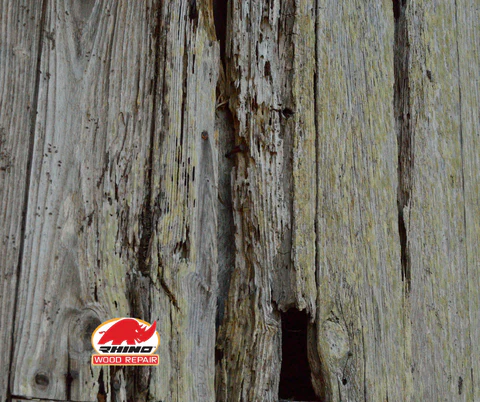
FAQs
- Can wood rot occur in dry conditions?
While moisture is the primary catalyst for wood rot, extremely dry conditions can also lead to the deterioration of wood over time. However, this process is much slower and less severe compared to rot caused by moisture.
- Is wood rot contagious?
Yes, wood rot can spread from an affected area to surrounding wood surfaces if the conditions are favourable. Prompt treatment and isolation of the affected areas are crucial to prevent further spread.
- Can painted or sealed wood still rot?
While paint and sealants can provide some protection, wood can still rot if moisture penetrates the surface or if the coatings are compromised over time.
- Is it safe to use rotted wood for structural applications?
No, rotted wood should never be used for structural purposes as it can compromise the integrity and safety of the structure. Prompt repair or replacement is necessary for any load-bearing or structural wood components that have experienced rot.
- Can wood rot be reversed or repaired?
In some cases, early stages of wood rot can be addressed and repaired using specialized wood restoration products like Rhino Wood Repair. However, severely rotted wood may need to be removed and replaced entirely.
By understanding the factors that contribute to wood rot and taking proactive measures, you can significantly extend the lifespan of your wood surfaces and structures. Regular maintenance, proper ventilation, and addressing any moisture issues promptly are key to preventing and minimizing the impact of wood rot. See our wood rot repair treatments here.
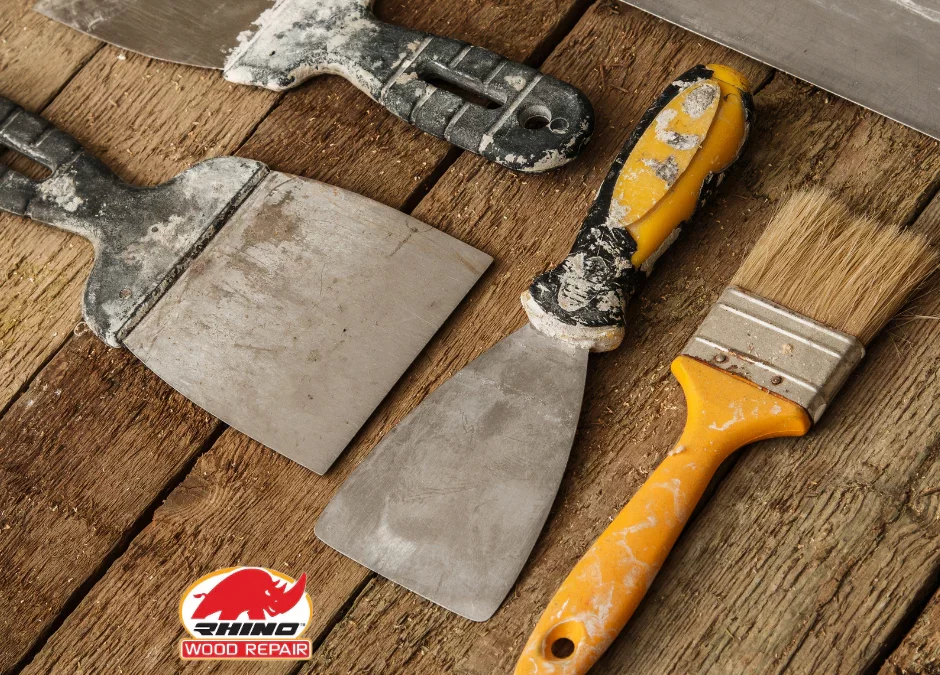
by Robin Pixner | Jun 7, 2024 | News
When it comes to repairing and restoring wood surfaces, two common products you’ll encounter are wood filler and wood putty. While both serve the purpose of filling holes, cracks, and imperfections, they have distinct differences in their compositions, applications, and properties. In this comprehensive guide, we’ll explore the key distinctions between wood filler and wood putty, helping you choose the right product for your specific needs.
What is Wood Filler?
Composition and Characteristics
Wood filler is a versatile product made from a combination of wood fibres, binders, and fillers. It is designed to mimic the texture and appearance of natural wood, making it an ideal choice for repairing and blending into wood surfaces. Wood filler is typically available in a range of colours to match various wood tones.
Applications and Uses
Wood filler is commonly used for filling larger holes, cracks, and defects in wood surfaces. It can be used on furniture, doors, window frames, and other interior or exterior wood projects. Wood filler is particularly useful for repairing damaged areas that require a more substantial and long-lasting solution.
What is Wood Putty?
Composition and Characteristics
Wood putty, on the other hand, is a softer, more pliable material made from a blend of fillers, binders, and sometimes wax or oil. It is typically sold in a semi-solid or putty-like consistency, making it easier to work with and shape. Wood putty is available in various colours, but it is primarily intended for interior use.
Applications and Uses
Wood putty is best suited for filling small holes, dents, and imperfections in wood surfaces. It is commonly used for tasks like covering nail holes, filling minor cracks, and smoothing out rough edges. Wood putty is a popular choice for quick and easy repairs, as it can be easily sanded and painted over once dry.
Key Differences Between Wood Filler and Wood Putty
- Composition: Wood filler contains wood fibers, while wood putty is a softer, more pliable material made from fillers and binders.
- Strength and Durability: Wood filler forms a stronger and more durable bond with the wood surface, making it better suited for larger repairs that may be subject to stress or wear.
- Texture and Appearance: Wood filler is designed to closely mimic the texture and appearance of natural wood, while wood putty has a smoother, more uniform texture.
- Application: Wood filler is typically used for larger holes, cracks, and defects, while wood putty is better suited for smaller imperfections and quick repairs.
- Indoor/Outdoor Use: While wood filler can be used for both interior and exterior projects, wood putty is primarily recommended for indoor use.
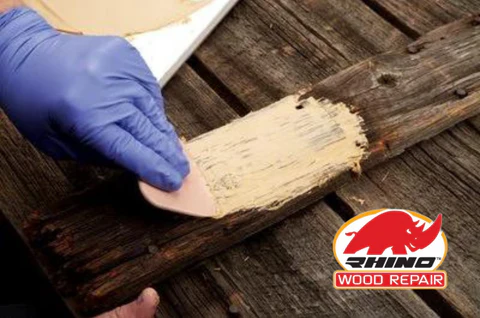
FAQs
- Can wood filler and wood putty be used interchangeably?
While both products serve a similar purpose, they are not interchangeable. Wood filler is better suited for larger, more substantial repairs, while wood putty is ideal for smaller, more cosmetic fixes.
- How long does it take for wood filler and wood putty to dry?
Drying times can vary depending on the product and environmental conditions, but generally, wood putty dries faster than wood filler, making it a better choice for quick repairs.
- Can wood filler and wood putty be sanded and painted over?
Yes, both wood filler and wood putty can be sanded and painted over once fully cured. However, wood filler may require more extensive sanding to achieve a smooth, consistent finish.
- Are wood filler and wood putty suitable for outdoor use?
While wood filler is suitable for both indoor and outdoor projects, wood putty is primarily recommended for indoor use as it may not withstand harsh outdoor conditions as well as wood filler.
- How do I choose the right colour for wood filler and wood putty?
Both products are available in various colours to match different wood tones. It’s essential to select a colour that closely matches the wood surface you’re working on for a seamless repair.
About the Author
Robin Pixner is the Owner and Chemist at Stellchem, the company behind the renowned Rhino Wood Repair brand. With years of experience in the wood restoration industry, Robin has developed a deep understanding of the unique needs and challenges faced by professionals and DIY enthusiasts alike. His commitment to quality and innovation has driven the creation of exceptional wood repair products, including the versatile Rhino Wood Repair line. Robin’s expertise and passion for his craft ensure that Stellchem continues to deliver solutions that exceed customer expectations.
By understanding the differences between wood filler and wood putty, you can make informed decisions and choose the right product for your specific wood repair and restoration needs. Whether you’re tackling larger repairs or minor touch-ups, Rhino Wood Repair by Stellchem offers a comprehensive range of high-quality solutions to help you achieve seamless and long-lasting results.
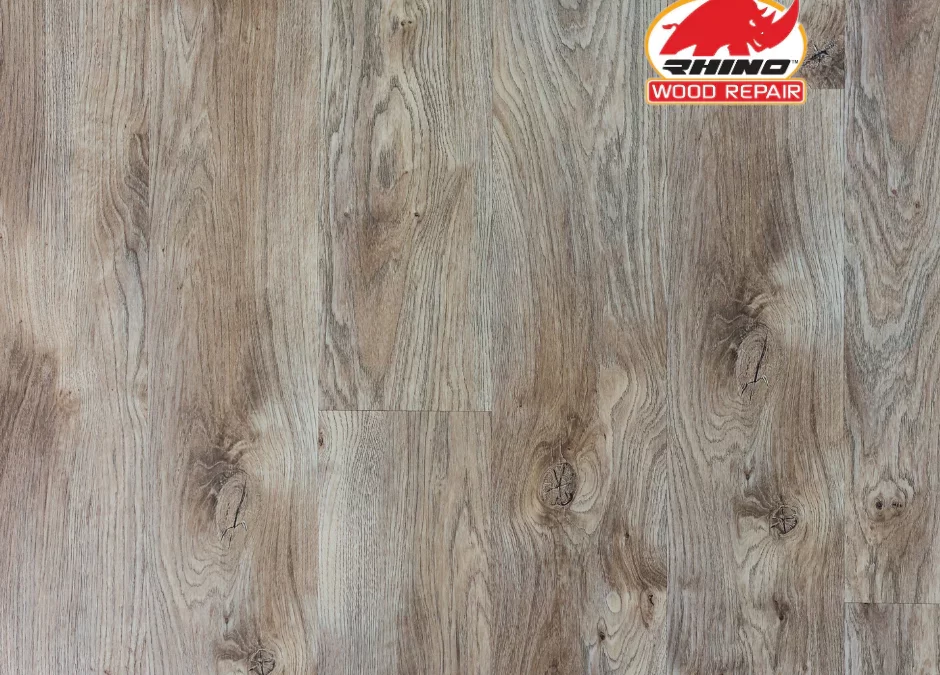
by Robin Pixner | Jun 7, 2024 | News
Wood is a beautiful and versatile material, but it is also susceptible to splitting and cracking over time due to moisture, temperature changes, and general wear and tear. Whether it’s a split in your hardwood floor, furniture, or any other wooden surface, these unsightly cracks can detract from the overall aesthetic and potentially lead to further damage if left unrepaired. Fortunately, Rhino Wood Repair from Stellchem offers an effective and long-lasting solution for split wood repair.
Understanding Split Wood: Causes and Consequences
Before diving into the repair process, it’s important to understand the causes and potential consequences of split wood:
- Moisture Exposure: Excessive moisture or humidity can cause wood to swell and eventually split or crack as it dries out.
- Temperature Fluctuations: Extreme temperature changes can also lead to wood expansion and contraction, resulting in splits or cracks.
- Age and Wear: Over time, wood can become brittle and more prone to splitting, especially in high-traffic areas or with constant use.
- Structural Integrity: Neglecting split wood can compromise the structural integrity of the affected surface or object, leading to further damage and potentially costly repairs or replacements.
The Rhino Wood Repair Solution for Split Wood
Rhino Wood Repair is a versatile and easy-to-use wood filler specifically designed to repair splits, cracks, and other types of wood damage. Here’s how it works:
Preparing the Split Area
- Clean the Surface: Remove any loose debris, dust, or contaminants from the split area using a brush or vacuum cleaner.
- Widen the Split: Use a chisel or utility knife to slightly widen the split, creating a small cavity for the wood filler to adhere to.
- Sand the Area: Lightly sand the surrounding surface to create a rougher texture, which will help the wood filler bond better.
Applying Rhino Wood Repair
- Mix the Filler: Follow the instructions on the Rhino Wood Repair package to properly mix the two-part wood filler.
- Fill the Split: Using a putty knife or specialty applicator tool, press the wood filler into the split, ensuring it fills the entire cavity.
- Smooth the Surface: Once the filler has partially cured (refer to package instructions for timing), use a putty knife or sandpaper to smooth the repaired area flush with the surrounding wood surface.
Finishing Touches
- Sand and Prime: After the wood filler has fully cured, sand the area to create a smooth finish, and apply a wood primer to prepare the surface for painting or staining.
- Paint or Stain: Once the primer has dried, you can paint or stain the repaired area to match the rest of the wood surface.
Benefits of Using Rhino Wood Repair for Split Wood
Choosing Rhino Wood Repair for your split wood repair needs offers several advantages:
- Durable and Long-Lasting: The high-quality formula ensures a strong and durable repair that can withstand daily use and wear.
- Easy to Use: With clear instructions and a user-friendly application process, Rhino Wood Repair is accessible to both professionals and DIY enthusiasts.
- Versatile Applications: Suitable for repairing splits and cracks in various wood surfaces, including floors, furniture, trim, and more.
- Seamless Finish: When applied correctly, Rhino Wood Repair blends seamlessly with the surrounding wood, creating an invisible repair.
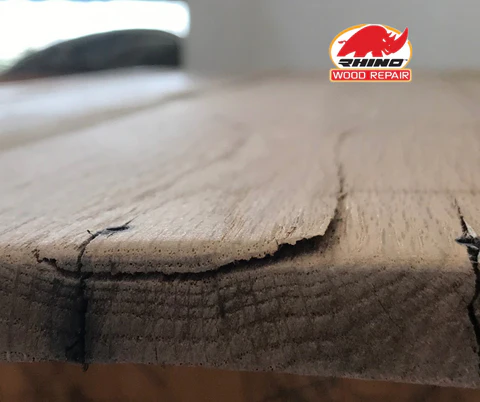
FAQ: Addressing Common Concerns
How long does Rhino Wood Repair take to cure fully?
The curing time can vary depending on the ambient temperature and humidity conditions. Refer to the instructions on the package for specific curing times.
Can Rhino Wood Repair be used on exterior wood surfaces?
Yes, Rhino Wood Repair is suitable for both interior and exterior applications, making it an excellent choice for repairing splits and cracks in outdoor wood surfaces.
Is sanding necessary before applying the wood filler?
Yes, lightly sanding the area helps create a roughened surface, which improves the adhesion of the wood filler and ensures a long-lasting repair.
How long does the repaired area need to dry before painting or staining?
The drying time can vary depending on the product and the ambient conditions. Consult the instructions on the package for the recommended drying time before painting or staining.
Can Rhino Wood Repair be used on other types of wood besides floors and furniture?
Absolutely! Rhino Wood Repair is versatile and can be used to repair splits and cracks in any type of wood surface, including trim, cabinets, and more.
With Rhino Wood Repair from Stellchem, you can easily and effectively repair split wood, restoring the beauty and functionality of your wooden surfaces. Don’t let unsightly cracks or splits detract from your home or workspace – take action today and achieve a seamless, long-lasting repair.
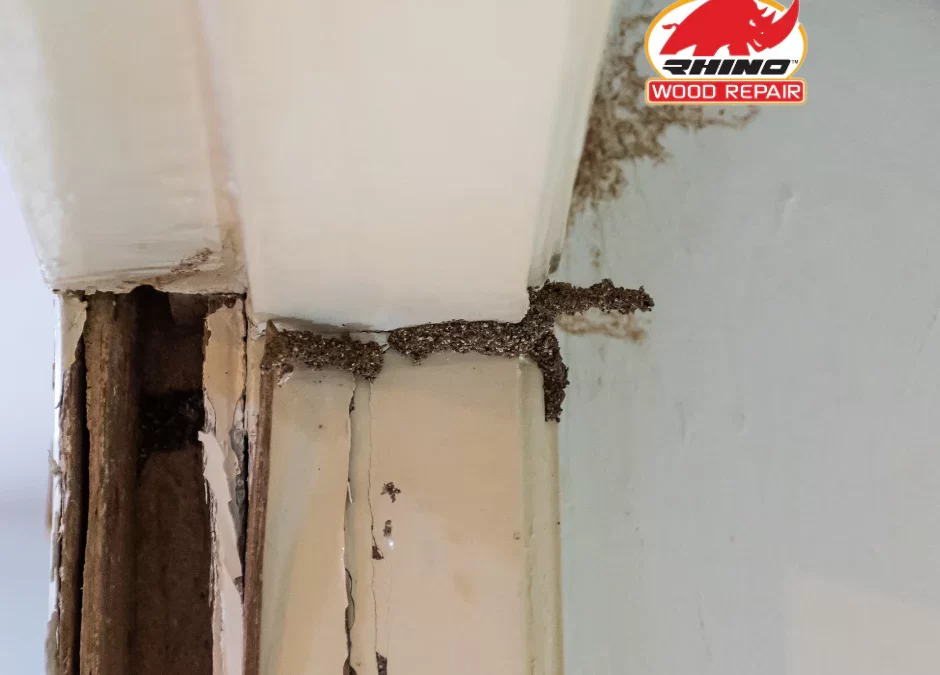
by Robin Pixner | Jun 7, 2024 | News
Over time, door frames can sustain damage due to wear and tear, accidents, or even woodworm infestations. Neglecting these issues can lead to further deterioration and compromise the structural integrity of your doorways. Fortunately, with Rhino Wood Repair from Stellchem, you can easily restore your door frames to their former glory and enhance the overall aesthetic appeal of your home or office.
Preparing the Area: The Key to a Successful Repair
Before applying the wood filler, proper preparation is crucial. Follow these steps to ensure a smooth and long-lasting repair:
- Remove Loose Material: Use a chisel or putty knife to remove any loose or crumbling wood from the damaged area.
- Clean the Surface: Thoroughly clean the surface, removing dust, dirt, or debris that may interfere with the adhesion of the wood filler.
- Sand for Better Adhesion: Lightly sand the area to create a rough surface, which will help the wood filler adhere better.
Applying Rhino Wood Repair: A Step-by-Step Guide
Mixing the Wood Filler
Follow the instructions on the Rhino Wood Repair package to mix the filler correctly. The consistency should be smooth and workable, not too thick or too runny. Proper mixing ensures optimal performance and a seamless repair.
Filling the Damaged Area
- Using a putty knife or a specialized applicator tool, apply the wood filler to the damaged area.
- Press the filler firmly into the cavity, ensuring there are no air pockets.
- Overfill the area slightly, as the filler will shrink slightly as it dries.
Smoothing and Shaping
Once the filler has partially set (consult the product instructions for timing), use a putty knife or sandpaper to smooth and shape the repaired area to match the surrounding surface. This step is crucial for achieving a seamless and professional-looking finish.
Finishing Touches: How to Repair a Door Frame with Wood Filler
Sanding and Priming
After the filler has fully cured, sand the area to achieve a smooth finish. This step is essential for preparing the surface for painting or staining. Apply a wood primer to the repaired area to ensure proper adhesion and a long-lasting finish.
Painting or Staining
Once the primer has dried, you can paint or stain the repaired area to match the rest of the door frame. Rhino Wood Repair is compatible with various types of finishes, allowing you to achieve the desired look and seamlessly blend the repair into your existing decor.
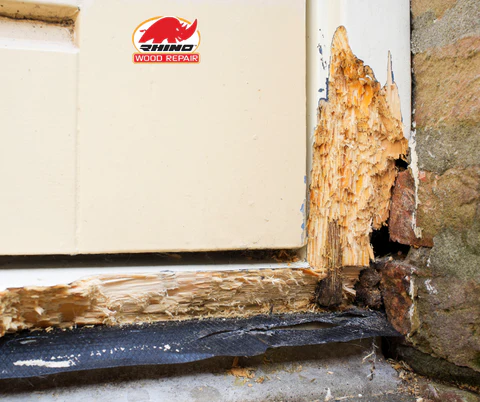
Why Choose Rhino Wood Repair?
Rhino Wood Repair from Stellchem is an effective and user-friendly solution for restoring wood surfaces, including door frames. Here are some key benefits of this product:
- Versatile Applications: Suitable for both interior and exterior door frames, as well as other wood surfaces like furniture and window frames.
- Easy to Use: With clear instructions and a user-friendly formula, Rhino Wood Repair is accessible to both professionals and DIY enthusiasts.
- Long-Lasting Repairs: The high-quality formula ensures durable and long-lasting repairs, protecting your investment.
- Seamless Finish: When applied correctly, Rhino Wood Repair creates a seamless finish that blends in with the surrounding wood.
FAQ: Addressing Common Concerns
How long does Rhino Wood Repair take to cure?
The curing time can vary depending on the product and the ambient temperature and humidity conditions. Consult the instructions on the package for specific curing times.
Can Rhino Wood Repair be used on exterior door frames?
Yes, Rhino Wood Repair is suitable for both interior and exterior applications, making it an excellent choice for repairing door frames exposed to the elements.
Is sanding necessary before applying the wood filler?
Yes, lightly sanding the area helps create a roughened surface, which improves the adhesion of the wood filler for a long-lasting repair.
How long does the repaired area take to dry before painting or staining?
The drying time can vary depending on the product and the ambient conditions. Refer to the instructions on the package for the recommended drying time before painting or staining.
Can Rhino Wood Repair be used on other types of wood besides door frames?
Absolutely! Rhino Wood Repair can be used to repair any type of wood surface, including furniture, window frames, and more, making it a versatile solution for all your wood repair needs.
By following these steps and using Rhino Wood Repair from Stellchem, you can easily restore your door frames to their original condition, ensuring a seamless and long-lasting repair that enhances the beauty and value of your property.
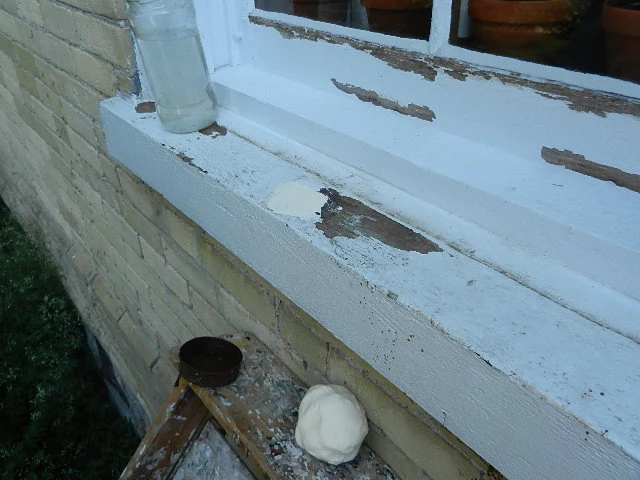
by Robin Pixner | Apr 15, 2024 | News
Wood rot can be a common issue, especially in outdoor structures or areas prone to moisture. However, with the right approach and products, you can effectively repair rotting wood without the need for full replacement. Here’s a step-by-step guide:
Assess the Damage
Before starting any repair work, assess the extent of the wood rot. Identify the affected areas and determine how deep the rot has penetrated.
Remove Rotted Portions
Using a chisel, knife, or similar tool, carefully remove the rotted wood. Ensure to remove all decayed portions until you reach solid, healthy wood.
Apply Rhino Wood Repair Products
Use Rhino Wood Repair’s specialized rot treatment solutions and fillers to treat and repair the affected areas. Follow the product instructions for application and drying times.
Sand and Smooth
Once the repair products have cured, sand the repaired areas to create a smooth and even surface. This step helps blend the repairs with the surrounding wood.
Finish and Protect
Apply a wood finish or protective coating to seal the repaired wood and provide added protection against future moisture and decay.
Frequently Asked Questions (FAQs)
Can I repair wood rot without replacing the entire structure?
Yes, you can repair localized wood rot by removing the affected areas and using specialized wood repair products like those offered by Rhino Wood Repair.
How long does it take to repair rotted wood using Rhino Wood Repair products?
The time required for repairs depends on the extent of the damage. Small repairs can be completed within a day, while larger repairs may take longer.
Will the repaired wood be as strong as before?
When properly repaired using high-quality products, the wood can regain its structural integrity and strength.
Can Rhino Wood Repair products be used for both indoor and outdoor wood repairs?
Yes, Rhino Wood Repair products are versatile and suitable for repairing wood in both indoor and outdoor settings.
Do I need special skills to use Rhino Wood Repair products?
Rhino Wood Repair products are designed for easy application, making them suitable for DIY enthusiasts and professionals alike.
Key Benefits of Using Rhino Wood Repair Products
- Effective Rot Treatment: Targeted formulas that stop wood rot and stabilize damaged areas.
- Professional-Grade Results: Achieve lasting repairs without the need for full replacement.
- Versatile Applications: Suitable for various wood repair projects, from small patches to larger restorations.
- Enhanced Durability: Provides long-lasting protection against future decay and damage.
- DIY-Friendly: Easy-to-use products ideal for homeowners and contractors.
Meet the Owner of Stellchem, Manufacturer of Rhino Wood Repair Products
Robin Pixner is the passionate owner of Stellchem, the company behind Rhino Wood Repair products. With years of experience in chemical formulations and a dedication to eco-friendly solutions, Robin leads a team committed to developing innovative wood repair products that empower users to restore and preserve wood surfaces effectively.
Summarizing How to Repair Rotting Wood Without Replacing It
In conclusion, repairing rotting wood can be a manageable task with the right approach and products. By assessing the damage, removing affected areas, and using Rhino Wood Repair’s specialized treatments, you can restore wood surfaces effectively and prevent further decay. Whether you’re a DIY enthusiast or a professional contractor, Rhino Wood Repair offers versatile solutions that deliver professional-grade results. Don’t let wood rot compromise your structures—take proactive steps to revive and preserve them with Rhino Wood Repair products.
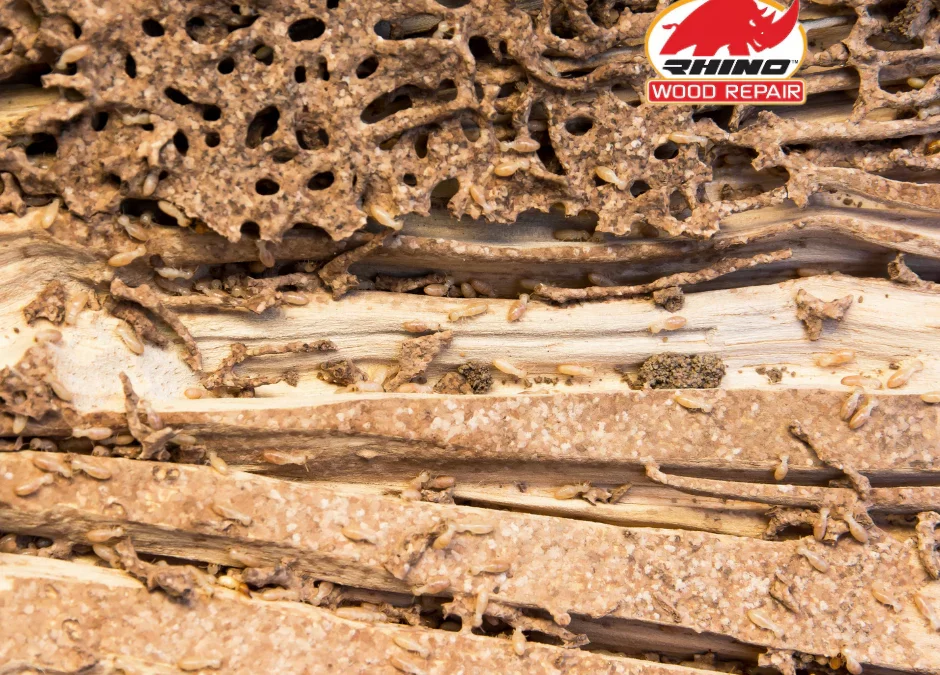
by Robin Pixner | Apr 12, 2024 | News
Carpenter ants are notorious insects known for causing damage to wooden structures, but do they actually eat wood? Let’s delve into this question and explore effective strategies for handling carpenter ant damage, including how Rhino Wood Repair products can reinforce weakened wood and repair damage caused by these insects.
Understanding Carpenter Ant Behavior
Contrary to popular belief, carpenter ants do not actually eat wood as termites do. Instead, they excavate wood to create nests and tunnels, which can lead to significant structural damage over time. Carpenter ants prefer moist or decaying wood for nesting but can also infest dry, sound wood. They tunnel through wood to establish galleries for their colonies, which weakens the structural integrity of the wood.
Signs of Carpenter Ant Infestation
Recognizing carpenter ant damage early is crucial for effective intervention and repair. Look out for the following signs:
- Hollow-Sounding Wood: Tap on wooden surfaces; hollow-sounding or soft wood may indicate carpenter ant activity.
- Frass and Sawdust: Accumulation of sawdust-like material around wooden structures.
- Visible Ant Activity: Spotting carpenter ants indoors, especially near wooden areas like window frames or door frames.
How Rhino Wood Repair Products Can Help
Rhino Wood Repair offers innovative solutions to strengthen weakened wood and repair damage caused by carpenter ants. Our specialized products penetrate deep into the wood, restoring its structural integrity and preventing further damage. Here’s how our products can assist:
- Reinforcement: Rhino Wood Repair products reinforce weakened wood fibers, making them less susceptible to carpenter ant damage.
- Restoration: Our repair solutions effectively fill in tunnels and cavities created by carpenter ants, restoring the wood to its original strength.
- Prevention: By treating infested areas with Rhino Wood Repair products, you can prevent future carpenter ant damage and preserve the longevity of your wooden structures.
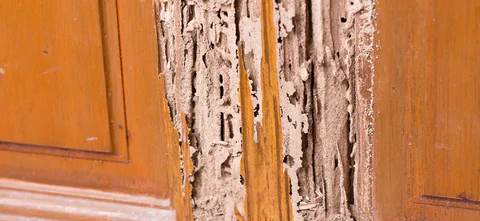
Frequently Asked Questions (FAQs) about Carpenter Ants and Wood Damage
Do carpenter ants eat wood like termites?
No, carpenter ants do not consume wood for nutrition. Instead, they excavate wood to create nesting galleries.
How can I prevent carpenter ant infestation in my wooden structures?
To prevent carpenter ant infestation, eliminate moisture sources around your home, seal cracks or openings in wooden structures, and keep firewood stored away from the house.
Can Rhino Wood Repair products be used to treat existing carpenter ant damage?
Yes, Rhino Wood Repair products are effective in repairing and reinforcing wood damaged by carpenter ants. Contact us to learn more about our tailored solutions for carpenter ant damage repair.
Protect Your Wood with Rhino Wood Repair
Don’t let carpenter ant damage compromise the integrity of your wooden structures. With Rhino Wood Repair’s specialized products and solutions, you can reinforce weakened wood and restore its strength against carpenter ant infestation. Contact us today to discover how Rhino PreTreat can help repair wood damage from insects.
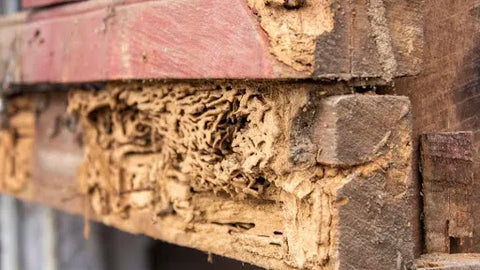
by Robin Pixner | Apr 8, 2024 | News
Wooden structures, including log homes and heritage restoration projects, are vulnerable to various forms of damage over time, with termite infestation and wood rot being two common issues that can compromise their integrity. It’s crucial to differentiate between termite damage and wood rot to effectively address and repair these problems.
Termite Damage: Sneaky Invaders of Wood
Termite damage results from the activity of termites, tiny insects that feed on cellulose present in wood. Here are some key points to consider about termite damage:
Identification:
- Look for hollowed-out wood or wood that appears to have tunnels or galleries running through it.
- Mud tubes along walls or foundations can indicate termite activity.
Characteristics:
- Termites leave behind smooth, clean-lined tunnels in the wood.
- Infested wood may sound hollow when tapped.
- Discarded wings or termite droppings (frass) near infested areas are common signs.
Prevention and Treatment:
- Regular inspections by professionals, especially for log homes or heritage structures, can help detect termite activity early.
- Use of termite-resistant wood or treated lumber in construction or restoration projects.
- Professional extermination and barrier systems can help eliminate termites and protect wooden structures.
Wood Rot: Nature’s Slow Decomposer
Wood rot, caused by fungi that thrive in moist conditions, gradually breaks down wood fibers. Here’s what you need to know about wood rot:
Identification:
- Soft or crumbly wood that easily breaks apart.
- Musty or damp odor around affected areas.
- Discolouration, often with a darkening or graying of the wood.
Characteristics:
- Wood affected by rot appears spongy and may have a stringy texture.
- Fungal growth (mold or mushrooms) on the surface of the wood.
Prevention and Treatment:
- Ensure proper ventilation and moisture control in log homes or heritage structures to prevent wood rot.
- Regularly inspect and repair damaged paint or sealants to maintain wood integrity.
- Use wood treatments and fungicides to prevent or halt rot progression.

Frequently Asked Questions (FAQs) about Termite Damage and Wood Rot
Can termite damage be mistaken for wood rot?
While both termite damage and wood rot can cause structural weaknesses in wood, they have distinct characteristics. Termite damage typically involves clean-lined tunnels and signs of termite activity like discarded wings or mud tubes, whereas wood rot results in soft, crumbly wood with a musty odor and fungal growth.
How can I prevent termite infestation and wood rot in my log home or heritage restoration project?
To prevent termite infestation, use termite-resistant wood or treated lumber, conduct regular professional inspections tailored to log homes or heritage structures, and employ barrier systems. For wood rot prevention, ensure proper ventilation and moisture control, promptly repair damaged paint or sealants, and apply wood treatments and fungicides.
Can damaged wood affected by termites or rot be repaired in log homes or heritage structures?
Yes, damaged wood can often be repaired depending on the extent of the damage. Professional wood repair services like Rhino Wood Repair can assess the damage and implement suitable repair solutions tailored to log homes and heritage structures.
Conclusion: Strengthening Wood with Rhino Wood Repair
Addressing termite damage and wood rot promptly and effectively is essential for preserving the structural integrity of wooden buildings and furniture, including log homes and heritage restoration projects. Rhino Wood Repair specializes in strengthening weakened wood and repairing damage caused by termites or rot, offering tailored solutions for log homes and heritage structures. Our expert team can assess the extent of the damage and apply innovative repair techniques to restore the strength and durability of your wood structures. Contact us today to learn more about how Rhino Wood Repair can help protect and enhance your wooden investments.
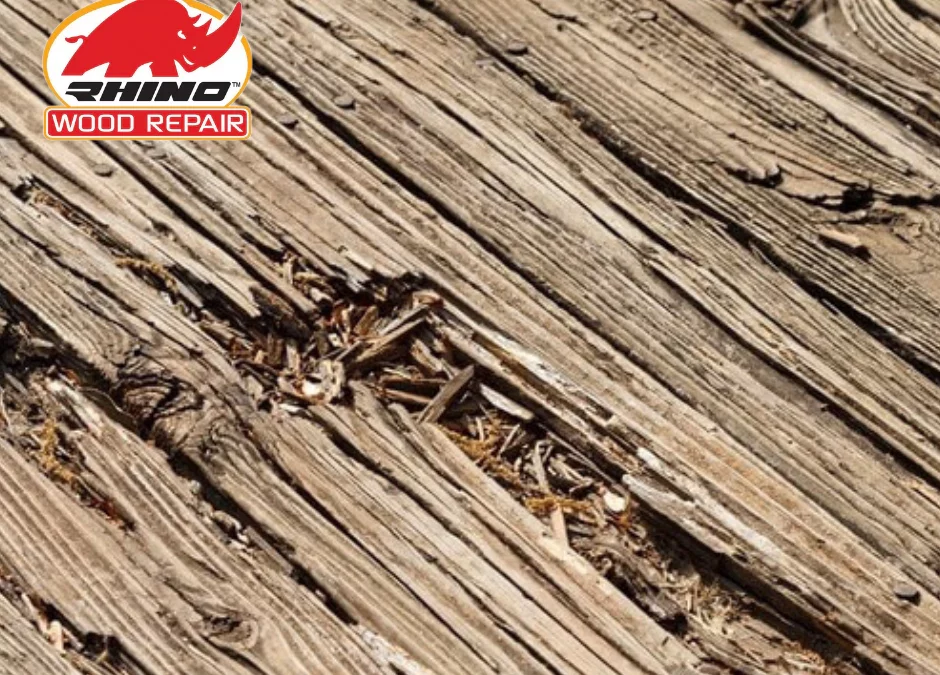
by Robin Pixner | Mar 5, 2024 | News
Decks are the quintessential outdoor retreat, offering a space for relaxation, entertainment, and enjoying the beauty of nature. However, over time, exposure to the elements can take its toll, leaving your deck in need of repair and restoration. Fortunately, with the right deck repair products and techniques, you can breathe new life into your outdoor oasis and enjoy years of continued use and enjoyment.
Deck Repair Products: Your Ultimate Solution
When it comes to deck repair, having the right products is essential for achieving long-lasting results. Investing in high-quality deck repair products not only ensures the durability and longevity of your deck but also enhances its aesthetic appeal. Here are some top deck repair products to consider:
1. Deck Stain and Sealant:
A quality deck stain and sealant can protect your deck from moisture, UV rays, and other environmental factors that contribute to deterioration. Look for products that offer UV protection and water resistance to prolong the life of your deck.
2. Deck Cleaner:
Regular cleaning is essential for maintaining the appearance and integrity of your deck. Choose a deck cleaner specifically formulated for your deck’s material and follow the manufacturer’s instructions for best results. Removing dirt, mold, and mildew buildup not only improves the appearance of your deck but also prevents future damage.
3. Deck Repair Kit:
A deck repair kit typically includes everything you need to repair minor damage to your deck, such as cracks, splinters, and small holes. These kits often contain wood filler, putty, and epoxy resin, allowing you to seamlessly repair damaged areas and restore the structural integrity of your deck.
4. Deck Boards:
In cases where deck boards are extensively damaged or rotted, replacing them may be necessary. Choose high-quality, pressure-treated wood or composite deck boards that are resistant to rot, decay, and insect infestation. Proper installation is crucial to ensure a seamless and secure fit.
Deck Restoration: Bringing Your Deck Back to Life
Over time, exposure to sunlight, rain, snow, and foot traffic can cause wear and tear on your deck, leading to cracks, splinters, and discoloration. Deck restoration is the process of rejuvenating your deck’s appearance and structural integrity, restoring it to its original beauty and functionality. Here are some key steps in the deck restoration process:
1. Inspection and Assessment:
Begin by thoroughly inspecting your deck for signs of damage, including rot, decay, loose boards, and protruding nails. Take note of areas that require repair or replacement and assess the overall condition of your deck.
2. Cleaning and Preparation:
Before beginning any repairs or restoration work, it’s essential to clean your deck thoroughly to remove dirt, debris, mold, and mildew. Use a deck cleaner and scrub brush or pressure washer to remove stubborn stains and buildup, paying particular attention to high-traffic areas and areas prone to moisture.
3. Repair and Replacement:
Once your deck is clean and dry, address any areas of damage or decay. Replace rotted or damaged deck boards, secure loose boards and railings, and repair any structural issues. Use a deck repair kit to fill cracks, gaps, and holes, ensuring a smooth and even surface.
4. Sanding and Refinishing:
After completing repairs, sand the entire surface of your deck to remove rough spots, splinters, and old finish. Choose a stain and sealant that complements your deck’s aesthetic and provides long-lasting protection against the elements. Apply the stain and sealant according to the manufacturer’s instructions, taking care to work evenly and methodically.
5. Maintenance and Care:
To prolong the life of your newly restored deck, practice regular maintenance and care. Sweep your deck regularly to remove dirt and debris, and clean up spills and stains promptly to prevent staining and discolouration. Inspect your deck periodically for signs of wear and damage, and address any issues promptly to prevent further deterioration.
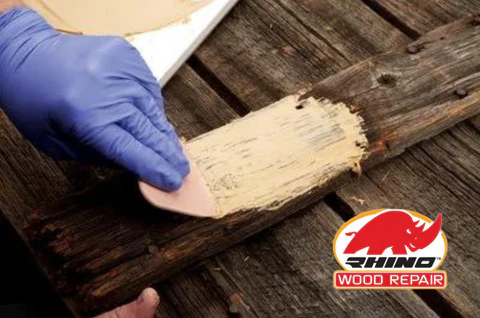
FAQs About Deck Repair
How do you repair damaged decking?
To repair damaged decking, start by assessing the extent of the damage and identifying the cause. For minor damage such as cracks, splinters, and small holes, use a deck repair kit to fill and seal the affected areas. For more extensive damage or structural issues, consider replacing damaged deck boards or seeking professional assistance.
Can rotten deck boards be repaired?
In some cases, rotten deck boards can be repaired using epoxy filler or wood putty to fill in the damaged areas. However, if the rot is extensive or compromising the structural integrity of your deck, it’s best to replace the affected boards entirely. Properly addressing and repairing rot is essential to prevent further damage and ensure the safety and stability of your deck.
Is it worth repairing decking?
The decision to repair decking depends on the extent of the damage, the overall condition of your deck, and your budget and preferences. In many cases, minor damage such as cracks, splinters, and surface stains can be easily repaired and restored, prolonging the life of your deck and enhancing its appearance. However, if your deck is extensively damaged or nearing the end of its lifespan, it may be more cost-effective in the long run to invest in a full deck replacement.
About the Author
Robin, the founder of Rhino Wood Repair, has been a prominent figure in the wood repair industry for decades. With a passion for innovation and a commitment to excellence, Robin has dedicated his career to developing products that redefine wood care. His expertise extends to various domains, including wood deck repair, log home repair, and heritage restoration. As the driving force behind Rhino Wood Repair, Robin continues to lead the way in providing solutions that breathe new life into cherished wooden assets.
In conclusion, revitalizing your deck is within reach with the right deck repair products and techniques. By addressing issues such as rot, decay, and damage promptly and effectively, you can restore your deck to its former glory and create an outdoor space that you’ll love for years to come.
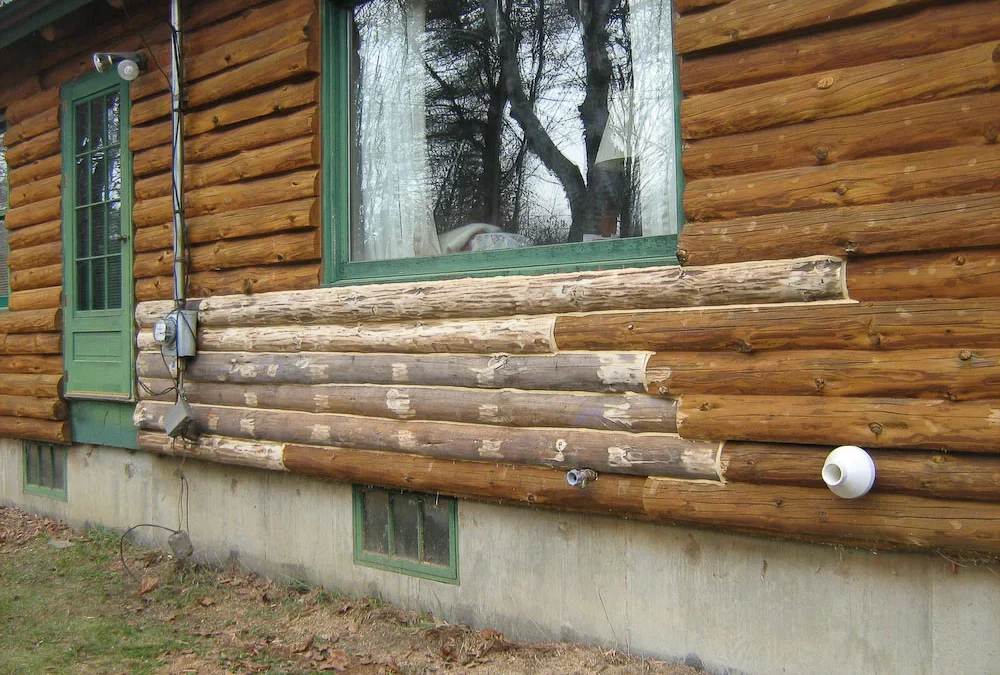
by Robin Pixner | Feb 23, 2024 | News
Introducing Rhino Wood Repair Products for Log Cabins
Nestled amidst the serene wilderness, log cabins stand as timeless icons of rustic charm and enduring beauty. However, the passage of time, coupled with the relentless forces of nature, often takes its toll on these architectural treasures. Among the most common adversaries are rot and decay, silently gnawing away at the structural integrity and aesthetic allure of log cabins. In this blog, we delve into the innovative solutions offered by the Rhino Wood Repair product line, specifically designed to combat the insidious effects of decay and preserve the splendor of log cabins for generations to come.
The Silent Threat: Log Cabin Rot and Decay
Within the cozy confines of log cabins, an unseen adversary lurks – log rot and decay. These insidious processes, fueled by moisture and fungal activity, gradually undermine the structural stability and visual appeal of wooden surfaces. Whether it’s the exterior logs weathering the elements or the interior beams succumbing to dampness, the consequences of untreated decay can be dire, compromising both safety and aesthetics.
Unveiling Rhino Wood Repair Products: A Beacon of Hope
Enter Rhino Wood Repair Products – a beacon of hope for log cabin owners grappling with the relentless march of decay. Engineered with precision and backed by cutting-edge research, this innovative product line offers a comprehensive arsenal against the ravages of time and nature.
The Science Behind Log Cabin Repair Products
At the heart of Rhino Wood Repair Products lies a sophisticated blend of science and craftsmanship. Unlike traditional remedies that merely mask the symptoms, Rhino products penetrate deep into the wood, targeting the root causes of decay with unparalleled efficacy.
The Power of Preservation: How Rhino Products Work
Harnessing the power of advanced formulations, Rhino Wood Repair Products infuse compromised wood fibers with specialized resins, effectively arresting the spread of decay while reinforcing structural integrity. Through a meticulous process of restoration, these products breathe new life into weathered surfaces, revitalizing the very essence of log cabin craftsmanship.
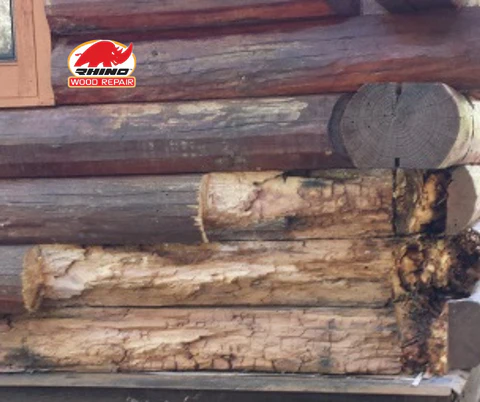
Log Cabin Restoration Products: Shielding Against the Elements
For wood cabins weathering the relentless onslaught of wind, rain, and sun, exterior restoration is paramount. Rhino Wood Repair Products offer a comprehensive suite of solutions tailored to combat outdoor decay, from specialized fillers that seamlessly integrate with existing wood textures to protective coatings that repel moisture and UV radiation.
Interior Revitalization: Nurturing the Soul of Log Cabins
Within the cozy confines of log cabin interiors, a different battle unfolds – one against dampness, mold, and the relentless march of time. Rhino Wood Repair Products rise to the challenge, offering targeted remedies designed to rejuvenate interior surfaces while safeguarding against future decay. From mold-inhibiting treatments to moisture-resistant sealants, each product is meticulously crafted to uphold the sanctity of log cabin interiors.
Who Would Benefit From a Wood Repair Product Like Ours?
- Log Cabin Owners:
- Preservation Enthusiasts: Log cabin owners who value the heritage and historical significance of their properties would find Rhino Wood Repair products invaluable in maintaining and restoring the authenticity of their cabins.
- Home Restoration Enthusiasts: Individuals passionate about home restoration projects, particularly those involving log cabins, will appreciate the effectiveness and ease of use offered by Rhino Wood Repair products.
- Investment-minded Individuals: Log cabin owners who view their properties as investments will see Rhino Wood Repair products as essential tools for preserving and enhancing the value of their assets over time.
- Log Cabin Restoration Companies:
- Professional Restorers: Restoration companies specializing in log cabins can leverage Rhino Wood Repair products to offer comprehensive and effective solutions to their clients, enhancing their reputation for quality craftsmanship and attention to detail.
- Contractors and Builders: Contractors and builders engaged in log cabin construction and renovation projects can benefit from incorporating Rhino Wood Repair products into their workflow, ensuring long-lasting results and customer satisfaction.
- Environmental Stewards: Restoration companies committed to sustainable practices and environmental stewardship will appreciate the eco-friendly formulations and long-term durability of Rhino Wood Repair products, aligning with their values and business ethos.
Embracing the Future of Log Cabin Restoration
In the timeless saga of log cabin restoration, Rhino Wood Repair Products emerge as beacons of innovation and resilience. By marrying cutting-edge technology with time-honored craftsmanship, these products offer a glimmer of hope amidst the encroaching shadows of decay. As custodians of tradition and stewards of legacy, log cabin owners can now embark on a journey of restoration, secure in the knowledge that the charm of yesteryears will endure for generations to come.
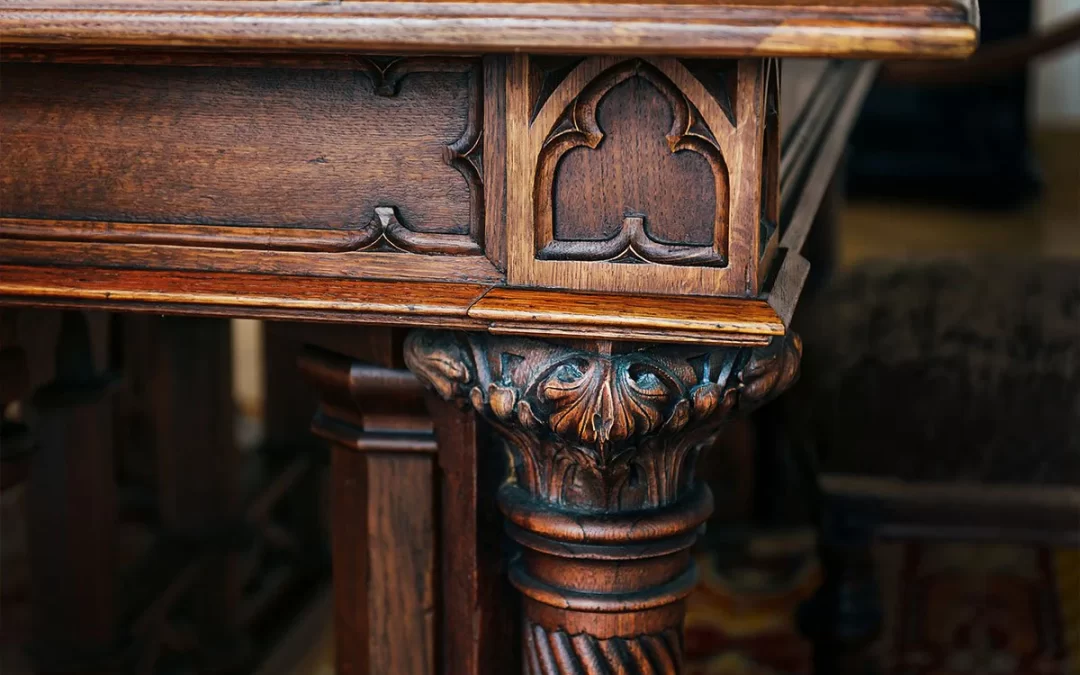
by Robin Pixner | Nov 30, 2023 | News
Furniture, with its unique charm and functional appeal, often becomes a cherished part of our lives. However, over time, furniture can face wear, tear, and damage, impacting both its aesthetics and structural integrity. In the realm of furniture restoration, Rhino Wood Repair emerges as a transformative solution, breathing new life into beloved pieces and preserving their timeless elegance.
Understanding the Need for Furniture Restoration
Effects of Age and Wear on Furniture
Furniture, subjected to daily use and environmental factors, gradually exhibits signs of aging. Surfaces may fade, wood can develop scratches or dents, and joints may weaken over time. These issues detract from the furniture’s original allure and functionality.
The Importance of Preserving Antique and Vintage Pieces
Antique and vintage furniture pieces hold immense historical and sentimental value. Preserving their original beauty and craftsmanship is essential, requiring specialized care and restoration techniques to maintain their authenticity and significance.
The Role of Rhino Wood Repair in Furniture Restoration
Tailored Assessment for Furniture
Rhino Wood Repair initiates the restoration process with a meticulous evaluation of the furniture’s condition. Their experts scrutinize the surfaces, identifying areas affected by wear, damage, or aging. This comprehensive assessment forms the basis of a personalized restoration plan for each piece of furniture.
Specialized Treatment for Furniture Restoration
Utilizing cutting-edge wood repair products, Rhino employs a tailored treatment plan to address the identified issues. These specialized solutions penetrate deep into the wood, revitalizing its appearance and structural integrity. This treatment not only restores the furniture’s original allure but also fortifies it against future damage.
Precision Repair Techniques for Furniture Revival
Rhino’s experts utilize precision techniques to repair scratches, fill in dents, and reinforce weakened joints in furniture. Their meticulous approach ensures that each restoration is carried out with utmost care, preserving the furniture’s authenticity while enhancing its durability.
Benefits of Rhino Wood Repair for Furniture Restoration
Preserving Furniture Aesthetics and Heritage
The restoration process ensures that the furniture’s original beauty and heritage are preserved. Rhino’s specialized treatments rejuvenate the wood’s natural colors and textures, reinstating the piece’s inherent charm and historical significance.
Extending the Lifespan of Furniture
By addressing wear and damage, Rhino Wood Repair significantly extends the lifespan of furniture. This restoration not only enhances its longevity but also reduces the risk of future deterioration, allowing these pieces to be cherished for years to come.
Protecting Valuable and Sentimental Pieces
Rhino’s protective coatings create a shield against environmental factors, preventing further damage to furniture. This proactive approach safeguards valuable and sentimental pieces, reducing the need for frequent repairs or replacements.
Sustainable and Environmentally Friendly Solutions
Rhino Wood Repair takes pride in offering environmentally friendly restoration solutions. Their products are formulated with a focus on sustainability, minimizing environmental impact while delivering exceptional results for furniture restoration.
Reviving Furniture with Rhino Wood Repair
Rhino Wood Repair’s expertise in furniture restoration epitomizes their dedication to preserving the allure and significance of cherished pieces. Through meticulous assessment, specialized treatments, and precise repairs, they revive worn-out furniture, ensuring that each piece retains its unique elegance and historical value.
With Rhino’s innovative solutions, furniture owners can trust in a comprehensive restoration process that not only rejuvenates their furniture’s aesthetics but also reinforces its structural foundation, ensuring enduring beauty and functionality.
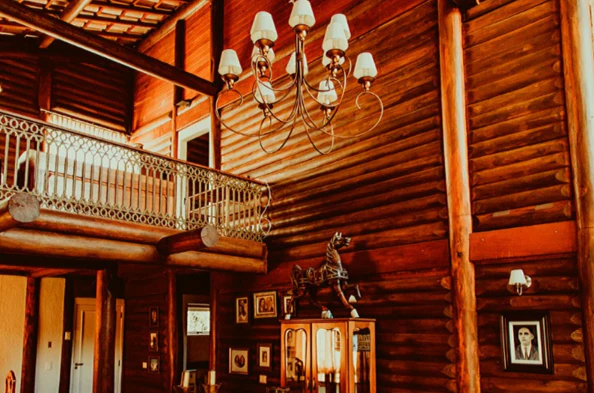
by Robin Pixner | Nov 30, 2023 | News
Wood, with its timeless appeal and natural beauty, often endures wear and tear over time. However, with the help of Rhino Wood Repair’s innovative restoration solutions, seemingly shabby and weathered wooden surfaces have been elevated to stunning, revitalized states. Let’s delve into some of Rhino’s most remarkable wood restoration projects, unveiling the extraordinary transformations achieved through their expertise and products.
The Power of Restoration: Rejuvenating Aged Wood Surfaces
The Historic Barn Makeover
Nestled in the heart of a rural landscape stood an old barn, weathered by decades of exposure to the elements. Rhino Wood Repair undertook the challenge of restoring this historical structure, preserving its rustic charm while breathing new life into its weathered exterior. The team meticulously applied Rhino’s specialized restoration products, working diligently to revitalize the barn’s aged wooden panels and beams.
The transformation was nothing short of breathtaking – the barn, once dull and deteriorated, emerged as a stunning testament to Rhino’s prowess. The restored wooden surfaces radiated with renewed vitality, showcasing the brand’s ability to revive even the most weathered wood, maintaining its authenticity while offering exceptional protection against future damage.
Residential Deck Restoration
A family’s cherished outdoor space had lost its luster over time. The wooden deck, once the hub of gatherings and leisure, had succumbed to the effects of weather and wear. Rhino Wood Repair took on the task of rejuvenating this essential outdoor area, aiming to restore not only its appearance but also its structural integrity.
Applying a tailored approach, Rhino’s experts meticulously treated and repaired the deck using their specialized products. The result was astounding – the once lackluster deck now gleamed with a renewed finish, showcasing Rhino’s capability to transform worn-out wood into a durable, aesthetically pleasing surface that invited gatherings and leisure once more.
Historical Furniture Restoration
In a museum showcasing antique furniture, time had taken its toll on several priceless wooden pieces. Rhino Wood Repair collaborated with the museum to restore these historical artifacts, employing their expertise to bring back the splendor of these treasures.
Through precise treatment and restoration techniques, the team meticulously rejuvenated the furniture, breathing new life into intricate carvings and delicate wooden surfaces. The restored pieces stood as stunning exemplars of Rhino’s commitment to preserving history while showcasing the transformative power of their restoration solutions.
Behind the Scenes: Rhino’s Restoration Process
Advanced Surface Assessment and Preparation
Every restoration project begins with a comprehensive assessment of the wood’s condition. Rhino’s experts meticulously examine the surfaces, identifying areas that require special attention. Once assessed, the team proceeds with thorough surface preparation, ensuring the wood is primed for optimal adhesion and treatment.
Tailored Treatment and Restoration
Utilizing their cutting-edge restoration solutions, Rhino applies a tailored treatment plan to address each wood surface’s unique needs. The specialized products penetrate deep into the wood, reinforcing its structure and enhancing durability. The restoration process not only revives the wood’s appearance but also strengthens it from within, offering long-term protection against future deterioration.
Quality Assurance and Finishing Touches
Rhino Wood Repair prioritizes quality at every stage of the restoration process. Once the treatment is completed, the team meticulously inspects the restored surfaces to ensure the highest standards are met. Finally, with finesse and attention to detail, the finishing touches are applied, leaving the wood looking pristine and inviting.
Elevating Wood Restoration to Extraordinary Heights
Rhino Wood Repair’s exemplary wood restoration projects stand as a testament to their commitment to excellence. Through their expertise and innovative products, they have consistently transformed shabby and worn-out wood into stunning, revitalized surfaces that exude timeless beauty and durability.
Witnessing these remarkable transformations, it’s evident that Rhino Wood Repair’s dedication to preserving the essence of wood while enhancing its longevity sets them apart as industry leaders in wood restoration. Their remarkable projects serve as inspiring examples of how the right expertise and products can breathe new life into aged wood, ensuring its beauty and resilience endure for generations to come.
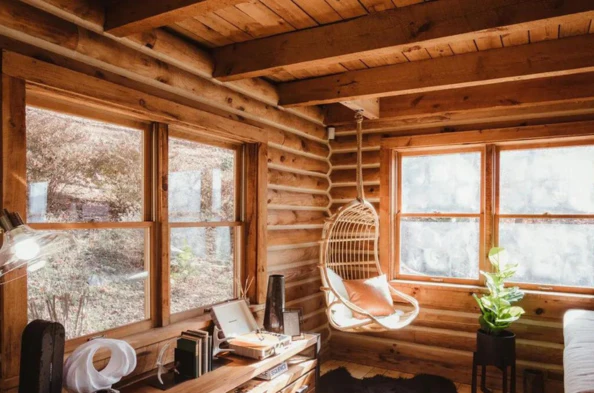
by Robin Pixner | Nov 30, 2023 | News
Wood cabins, with their rustic charm and enduring allure, often face challenges due to weathering, moisture, and age. Over time, these structures can display signs of wear and damage, impacting their visual appeal and structural stability. However, with the innovative solutions offered by Rhino Wood Repair, the restoration of wood cabins becomes a transformative process, breathing new life into these cherished structures.
Understanding Wood Cabin Damage
Effects of Weathering on Wood Cabins
Wood cabins, exposed to changing weather conditions throughout the year, endure the harsh effects of rain, snow, and sunlight. These elements can cause discoloration, checking, and deterioration in the wood, affecting both the appearance and structural integrity of the cabins.
Moisture and Decay Challenges
Retained moisture within the wooden surfaces can lead to decay, rot, and the development of mold. These issues pose risks to the overall integrity of wood cabins, potentially leading to further deterioration if left unaddressed.
The Rhino Solution: Restoring Wood Cabins to Their Former Glory
Tailored Wood Cabin Assessment
Rhino Wood Repair begins the restoration process with a comprehensive assessment of the wood cabin’s condition. Their experts meticulously examine the wooden surfaces, identifying areas affected by weathering, moisture, or decay. This detailed evaluation guides the tailored restoration plan for each wood cabin.
Specialized Treatment for Wood Cabin Restoration
Utilizing advanced wood repair products, Rhino applies a specialized treatment plan to address the identified issues. The products are specifically designed to penetrate deep into the wood, strengthening its structure and rejuvenating its appearance. This treatment not only restores the wood’s original character but also fortifies it against future damage.
Extensive Wood Repair and Reinforcement
Where damage is present, Rhino’s experts employ precision techniques to repair and reinforce the wood. Special attention is given to areas affected by rot, decay, or insect infestation. The application of Rhino Wood Repair’s solutions significantly extends the life of the wood while enhancing its durability and strength.
Benefits of Rhino Wood Repair for Wood Cabins
Preservation of Wood Cabin Aesthetics
The restoration process ensures that the natural beauty and character of the wood cabins are preserved. Rhino’s specialized treatments revive the wood’s original color and texture, enhancing the overall visual appeal of the structure.
Structural Integrity and Longevity
By addressing damage and reinforcing weakened areas, Rhino Wood Repair significantly improves the structural integrity of the wood. This not only extends the lifespan of the wood cabin but also reduces the risk of future damage caused by weathering or moisture.
Resistance to Future Damage
Rhino’s products create a protective barrier that shields the wood from environmental factors, preventing moisture retention and decay. This proactive approach helps safeguard the wood cabin against potential damage, reducing the need for frequent repairs.
Eco-Friendly and Sustainable Solutions
Rhino Wood Repair takes pride in offering environmentally friendly restoration solutions. Their products are formulated with a focus on sustainability, minimizing environmental impact while delivering exceptional results for wood cabin restoration.
Conclusion: Transforming Wood Cabins with Rhino Wood Repair
Rhino Wood Repair’s expertise in wood cabin restoration stands as a testament to their commitment to preserving the beauty and integrity of these cherished structures. Through meticulous assessment, specialized treatments, and extensive repairs, they breathe new life into weathered and damaged wood, ensuring that wood cabins stand strong and beautiful for generations to come.
With Rhino’s innovative solutions, wood cabin owners can trust in a comprehensive restoration process that not only revitalizes their cabins’ aesthetics but also reinforces the structural foundation, offering long-lasting protection against the elements.

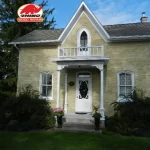 Frequently Asked Questions
Frequently Asked Questions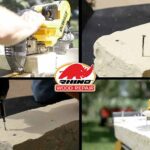 Videos
Videos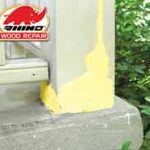 Colourful Chemist cooks up wood-repair product
Colourful Chemist cooks up wood-repair product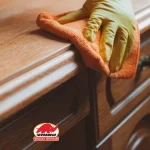 Custom Adhesive Epoxies & Formulations
Custom Adhesive Epoxies & Formulations THE SIMPLE SOLUTION TO A DIFFICULT PROBLEM.
THE SIMPLE SOLUTION TO A DIFFICULT PROBLEM.
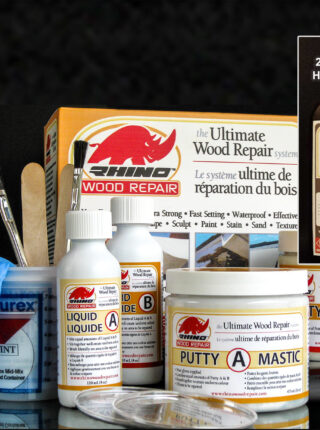
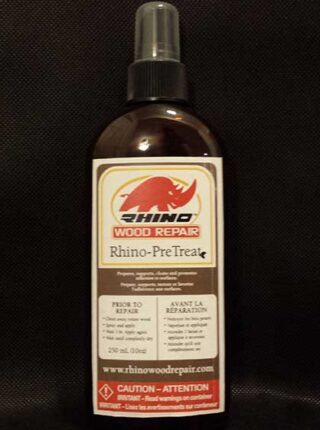
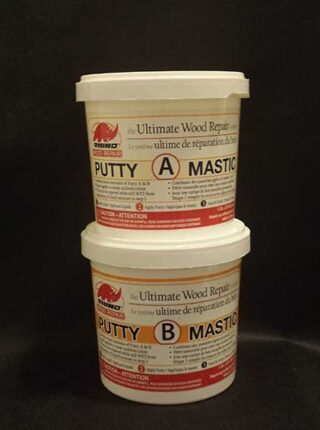
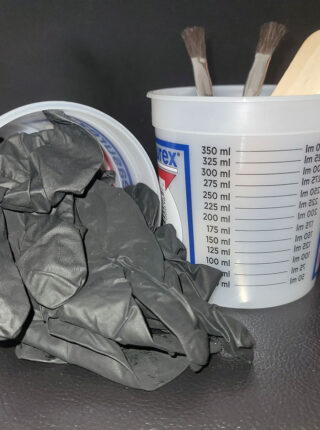
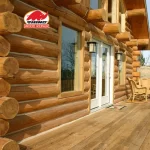 Rhino Wood Repair for Log Homes Looking to combat wood rot on your log home? Enter Rhino Wood Repair — the vanguard of wood restoration, with a legacy spanning over three decades. Led by Robin Pixner, a visionary in the field of wood preservation, our mission is simple yet profound: to breathe new life into aging wood, to fortify its strength, and to ensure that the legacy of log homes endures for generations to come.
Rhino Wood Repair for Log Homes Looking to combat wood rot on your log home? Enter Rhino Wood Repair — the vanguard of wood restoration, with a legacy spanning over three decades. Led by Robin Pixner, a visionary in the field of wood preservation, our mission is simple yet profound: to breathe new life into aging wood, to fortify its strength, and to ensure that the legacy of log homes endures for generations to come.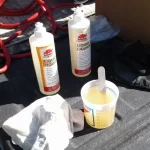 Wood Epoxy
Wood Epoxy







